Hobbiton – Our Walk Through The Shire
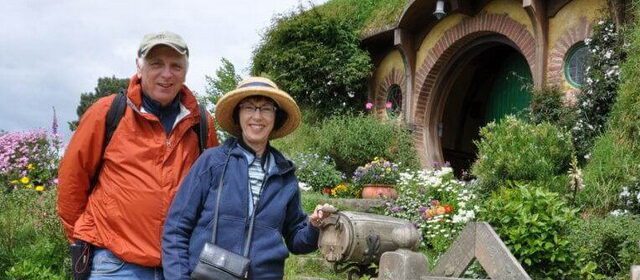
Way before Bob and I decided to go to New Zealand, I held close to my heart the idea of one day visiting Hobbiton. When we viewed the movie, The Hobbit, I fell in love with the whimsical Hobbit Holes that Bilbo Baggins and Frodo called home. The dome-shaped dwellings captured the imagination of my inner child, and the seemingly utopian bucolic lifestyle struck a chord with me.
Of course the allure of fantastical creatures and magic was also fun to contemplate, but it is the pretext on which the Tolkien books are based and the clear underlying message that resonates with me. The idea that one must always have hope, foster optimism, show courage against all odds, and embrace adventure are concepts that speak to me on a personal level.
It is impossible to visit Hobbiton without embracing the fantasy world that Director Sir Peter Jackson brought to life from pages of the books by author J.R.R. Tolkien, Lord of the Rings and The Hobbit, also called There and Back Again, and
it was easy to see why Peter Jackson chose the Alexander farm for the production of his movies. Near Matamata on the North Island of New Zealand, the acreage not only includes lush green rolling hills, but remarkably there are no power lines, roads or modern-day trappings to mar the idyllic landscape. It was the perfect place to bring to life The Shire.
But first we had to get there. Chris, the proprietor at our lodgings, Panorama Country Homestay in Rotorua, phoned ahead and booked our tickets for a 10 o’clock tour. An easy hours’ drive through the scenic countryside put us at the Hobbiton Visitor Centre…
where we boarded a bus to convey us through the scenic pastureland of the Alexander property to the valley of Hobbiton.
My anticipation had me as giddy as a child and was helped along by the movie’s musical score pumping from the sound system along with interspersed details about how the Alexander farm had been discovered through an aerial search for just such an appropriate location. The short ride brought us to a small parking lot.
Just as Frodo’s adventure began when he exuberantly ran from Hobbiton along Gandalf’s Cutting,
so our adventure began by entering Middle Earth along that same narrow footpath. The passage revealed nothing of what was in store until we broke free of the close stone walls.
And then we were there, in The Shire. I was bubbling over with joy because, even at a glance, I knew that Hobbiton was everything I had hoped it would be. Directly in front of us, a crude wooden signpost planted firmly next to a tidy garden plot pointed the way to East Farthing, West Farthing and Tuck Borough.
A turn to either side revealed a couple of Hobbit Holes neatly tucked into the hillocks bordering the village path, each with a different coloured round wooden door.
Facing us dead ahead was a network of lanes that wend their way through orchards, over stiles, through a woodlot, by the frog pond, across a gully and up The Hill…
where two huge trees stand sentinel over the quiet village below.
In all, forty-four Hobbit Holes peak out of the undulating emerald hillsides on the Alexander farm transforming a 12-acre section into the centre of Middle Earth.
Even the fertile pastures of sheep and cattle surrounding Hobbiton blend seamlessly with the humble rural lifestyle of the Hobbits. Though we were attached to a tour group of 25 people or so, we were not obligated to keep up with the group but could linger at will to admire each individual Hobbit Hole. And there was much to appreciate!
Known as a smial or Hobbit burrow, each was a luxurious underground dwelling. As described in a quote by J.R.R. Tolkien, “In a hole in the ground there lived a hobbit. Not a nasty, dirty, wet hole, filled with the ends of worms and an oozy smell, nor yet a dry, bare, sandy hole with nothing in it to sit down on or to eat: it was a hobbit-hole, and that means comfort.”
In the movies, cozy rooms populated with interesting fixtures are portrayed within each Hobbit Hole, and although we checked to see if some of the Hobbits were home, we found each interior was no more than a narrow shell albeit sometimes used for storage or with a modest piece of Hobbit-sized furniture still in place.
Now, the same cannot be said for the exterior elevations and grounds. Exquisite detail went into the dooryards and facades of each unique dwelling and provides clues as to the trade of the occupant. The poorest Hobbits live in primitive burrows with no window or at best one,
while the wealthier Hobbits have more luxurious dens based on the diggings of their ancestors and sometimes expanded from a humble hole into a many-tunneled mansion.
One of the Hobbit Holes belongs to the Beekeeper. To convey that to the casual observer, a wooden beehive sits with lid open near the front door of the smial,
a couple of honeycomb frames are stacked on the tiny table by the door, and the beekeeper’s gloves are right where he left them.
Nearby, jars filled with rich, golden honey are lined up at a stall where neighbours using the honour system can drop coins into a rough-spun sack tethered to a stick.
Outside the Baker’s Hobbit Hole, we found a tiny wheelbarrow laden with bulging bags of flour while a selection of freshly-baked bread on a rudimentary wooden stand tempts prospective buyers.
Where the Cheesemaker hangs his hat, a window in the burrow offers a glimpse of cheeses waiting to ripen,
and a shaded table next to the cart trail that passes his dwelling showcases a nice selection of cheeses that are ready to eat.
I had great fun pretending to be a Hobbit.
Hobbits are very resourceful and love to make things by hand; many Hobbits have wares on display to prove that point. Hobbits also take pride in their finely-crafted items and believe that, if something is worth doing, it must be done well. Where the gourd artist resides, artfully-painted gourds hang from the rafters, and pots of paint line shelves next to a leadlight window.
Well-made wooden items are on display outside of the carpenter’s dwelling illustrating his craftsmanship,
and even a pedal-operated lathe stands idle, that is until Bob gave it a whirl. The attention to detail thrilled both Bob and me when we discovered the carpenter’s tools that completed the picture.
It is common knowledge that Hobbits have a passion for gardening, and they put much effort into a well-ordered and skillfully-farmed countryside, but Bob and I were absolutely delighted with the aura of lazy comfort that permeates the Hobbit village.
The whole effect is partly owing to the finely-orchestrated tumble of flowers and plants in each Hobbit’s cottage garden. Year-round gardeners at Hobbiton ensure that there is a constant succession of beautiful blooms to enhance all of the plantings and adorn each Hobbit home.
The home of Samwise “Sam” Gamghee, the Hobbit known for gardening, and his wife, Rosie, proudly showcases an English country garden complete with kitchen herbs. A bountiful profusion of vibrant blooms spills over a weathered picket fence,
while pretty pink roses clamber up onto the burrow-like bump of their home.
Because Hobbits are essentially self-sufficient and they enjoy simple food, it goes without saying that vegetable gardens and orchards are scattered throughout Hobbiton. Vegetable patches are not tidy groomed plots but rather laid out in unique casual designs. Using a variety of herbs, vegetables and flowers, the combination of hues and textures delights the senses while providing plenty of vegetables for the Hobbits and the grounds workers alike.
Our tour guide also relayed interesting details about the film production when we were within earshot. One fun fact is that the director had to come up with a way of accentuating the significant size differences between the Hobbits, elves, dwarves, men, and Gandalf, the wizard. One method employed to create the illusion was by building Hobbit Holes in graduated sizes ranging from 60% to 100% scale. Gandalf standing next to a small door like the one above would appear far taller than Frodo where he was filmed entering a full-sized door.
In Hobbiton, the Hobbit Holes blend seamlessly with the grassy plain, whereas some other features dominate the quiet village. Case in point, The Party Tree. As described in The Hobbit, any festivals or birthdays are celebrated by all the Hobbits gathering around The Party Tree where it presides over the Party Field.
When scouting for a movie location, the director took note of an enormous pine tree next to a small lake on the Alexander’s property. Jackson knew immediately that it would make the perfect Party Tree and become the centrepiece of Bilbo’s 111th birthday festivities.
The natural landscape of the movie location also provided the perfect spot for the most important Hobbit Hole, that of Bilbo Baggins of Bag End. Providing the best view of The Shire, it had to be nestled beneath The Hill and sheltered by a massive oak tree. Only problem was the lack of an aptly-placed oak tree.
So, when filming Lord of the Rings, they constructed an oak tree using pieces of a massive oak tree that grew near Matamata. Branches of the living tree were numbered and cut, the trunk sectioned, then all parts were moved and pieced back together like a jigsaw puzzle. Following filming, that tree was dismantled.
When it was decided to make The Hobbit movie a few years later, another oak tree had to be put in place above Bag End but one that looked 60 years younger than the first one, to be true to the story line. This time an artificial tree with 200,000 synthetic leaves was installed on top of The Hill. It is so realistic that it took our tour guide to enlighten us about the secret.
Bob and I were tickled when our wanderings brought us to Bilbo Baggins’ doorstep. A short series of stone steps leads from the gate to a commodius Hobbit Hole befitting of a village elder,
and to be sure, it had the iconic green door. Standing slightly ajar, the door hinted that Bilbo had left in a hurry, and the glimpse into his burrow was enough to suggest a world of adventure just waiting within.
Although a wooden bench in Bilbo’s garden begs visitors to sit a spell,
the warning issued on the infamous sign, “No Admittance – Unless on Party Business”, forestalled any temptation. Guess Bilbo was out making plans for his birthday party!
I could have stayed in Hobbiton all day soaking up the ambience. It is a magical place that had me recalling bygone eras and simpler times.
We leisurely scrutinized each burrow-like bump that was so neatly sheltered by earth and blanketed with wildflowers, grass and clover,
and delighted in the small Hobbit-sized clothes hung on the line to dry.
We noted every exquisite detail that marked each Hobbit’s dwelling…
such as garden tools at rest by the front door,
a winsome scarecrow defending a vegetable patch,
tiny terracotta pots stacked neatly by one aspiring gardener,
the village bulletin board crammed with current notices,
a whimsical letter box,
the woodcutter’s ample supply of firewood…
a lichen-crusted wooden gate outfitted with hand-forged hardware, and
wicker baskets overflowing with the garden’s bounty.
Everything pointed to the peaceful life that Hobbits have in this beautiful, fruitful land where country living is at its finest. We could understand why Hobbits are content to remain in The Shire enjoying the comforts of home, and yet Frodo and Bilbo found the courage to leave Hobbiton and set off on an adventure.
Our own adventure continued as we wandered past the Frog Pond and Sackville Gardens, skirted The Party Field…
then ducked into the cool shade of a small forest where we followed the Merry Meander alongside Ferny’s Fen, ’round The Water and to the Watermill.
The Mill, as it is commonly called, is absolutely adorable. Inspired by a similar mill that J.R.R. Tolkien remembered from his youth when living near Birmingham, England, the gently-turning wheel creates a sense of peace and tranquility…a good place to sit and ponder life for awhile.
The Mill is located adjacent to Bywater Bridge on the shore of The Water. It has been run by the Sandyman family for generations and provides ground corn to the Hobbits. It’s large waterwheel is powered by the meandering river that runs through Hobbiton.
As we neared the end of our tour, The Green Dragon Inn came into view, so we lingered on the beautiful arched stone bridge admiring the soft reflection of Hobbiton in The Water. The tour guide soon hastened us and we were pleased that she did.
When Bob and I slipped into the warm, cozy atmosphere of The Green Dragon Inn, we were enveloped in the amiable atmosphere of a Hobbit’s life. Technically in Bywater east of Hobbiton, The Green Dragon Inn is a watering hole for Hobbits from both villages, and as we contemplated which specially-brewed refreshment to toast our immersion in all things Hobbit,
we could have sworn that Frodo peeked through one of the round wooden windows.
With the glow from crackling log fires warming the golden tones of the rustic interior, the atmosphere had us wanting to stay right there in Hobbiton. We could feel the history of the place simply by appreciating all of the artifacts displayed on shelves and fireplace mantels.
The many rooms of the Pub offer ample seating for those who want to sample some of the rustic fare, and I was given the opportunity to step into the role of a barmaid and tempt fellow pub-goers with a choice of sweet treats.
Thankfully, there is only one dragon in The Shire, and that is the masterfully-carved Green Dragon that graces the arch above the bar of the Inn.
Our adventure did not end there. As we strolled along The Water’s edge towards East Farthing, we were given a pretty view of small Hobbit Holes dug into the far shore at the edge of The Party Field.
Passing by a collection of fishing nets and traps set out to dry by one Hobbit gave away the ideal fishing hole, and to perpetuate the fantasy, a primitive wooden rack was hung with fish to dry.
As we were paraded back towards the parking lot, I reflected on this truly magical place. For me, it had been the opportunity to visit a fictional land not a movie set. I was able to experience where the story had taken place, not where a movie had been filmed. I played at touching something untouchable by unlatching the gates, opening the doors, peaking into the mailboxes, walking in the footsteps of The Hobbits and sitting in the Inn. It was great fun visualizing the imaginary as it related to the physical space of that 12-acre plot known as Hobbiton, and the whole experience had been grand.


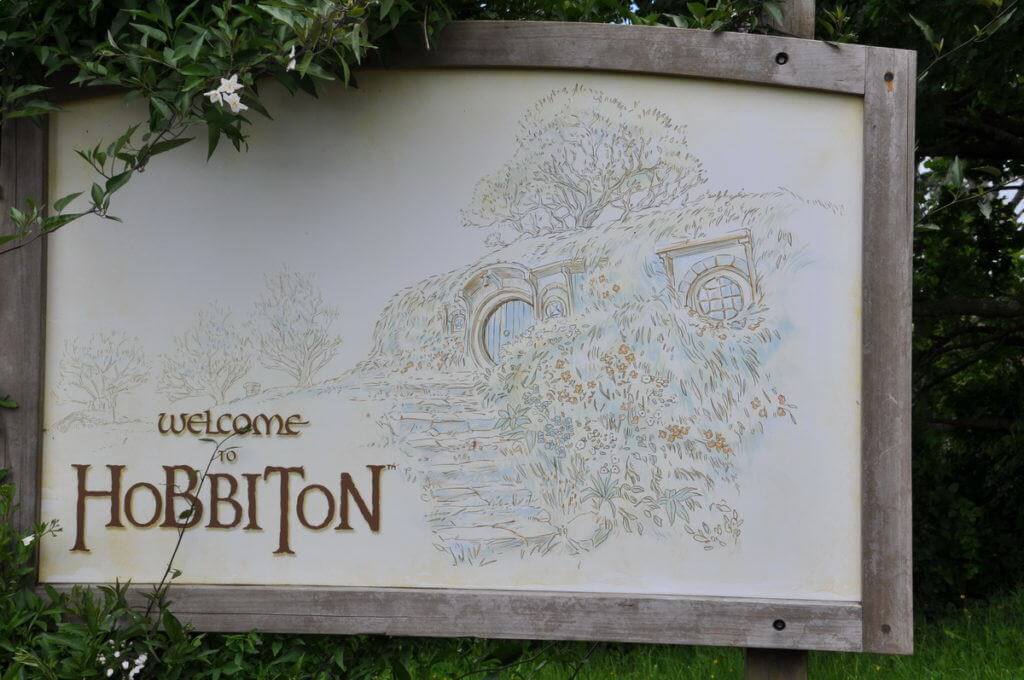
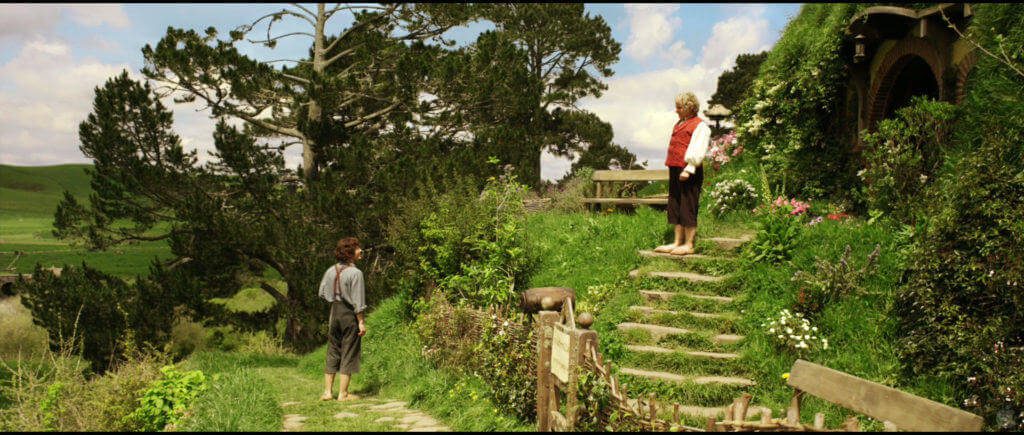
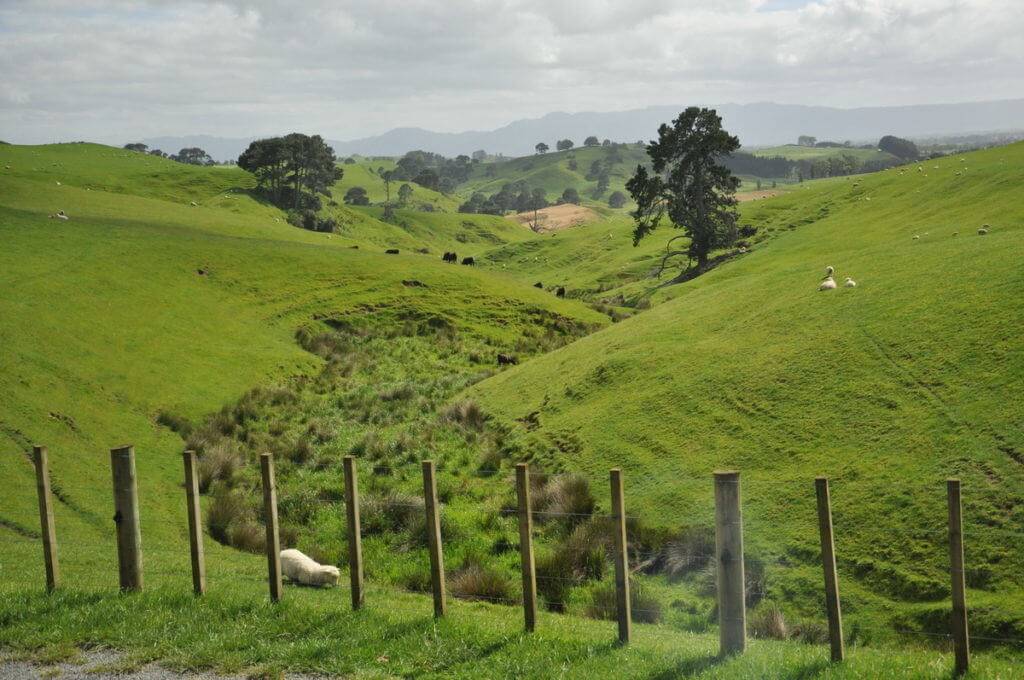

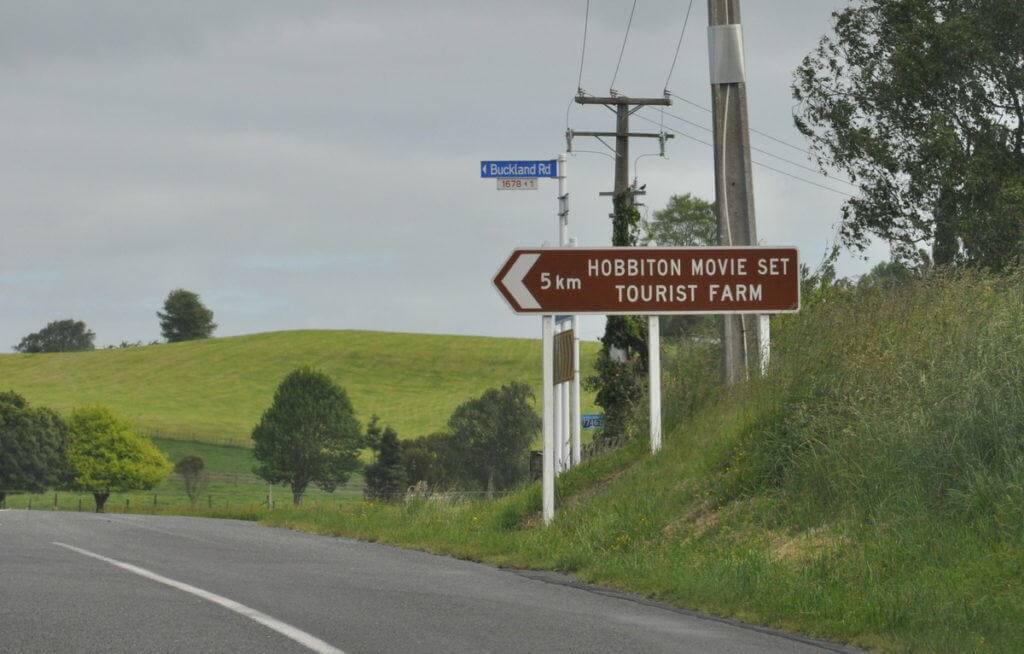


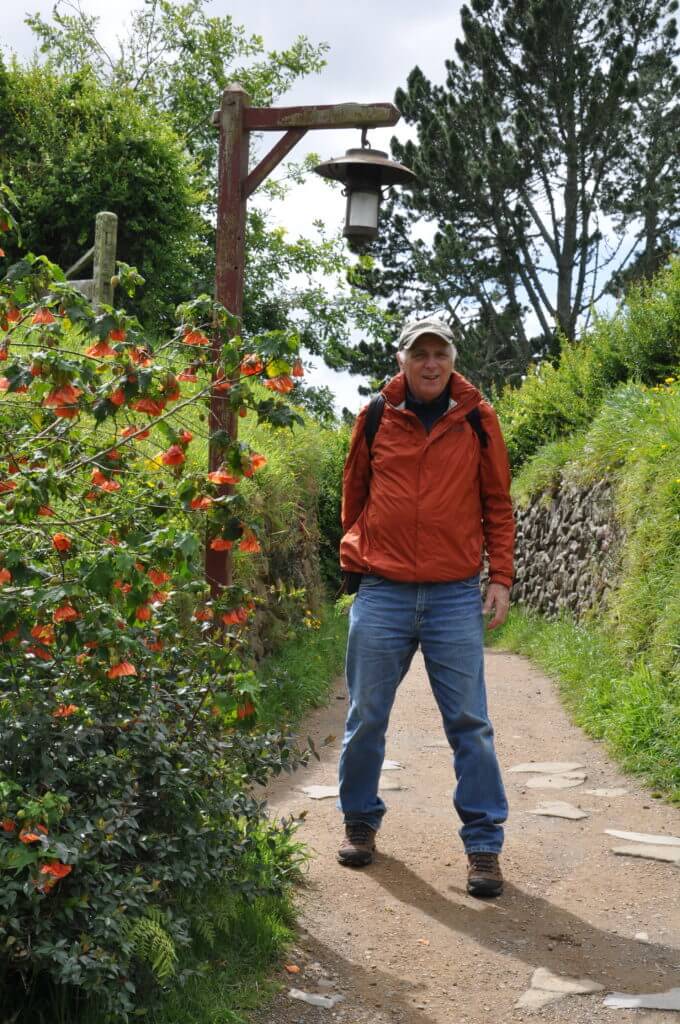
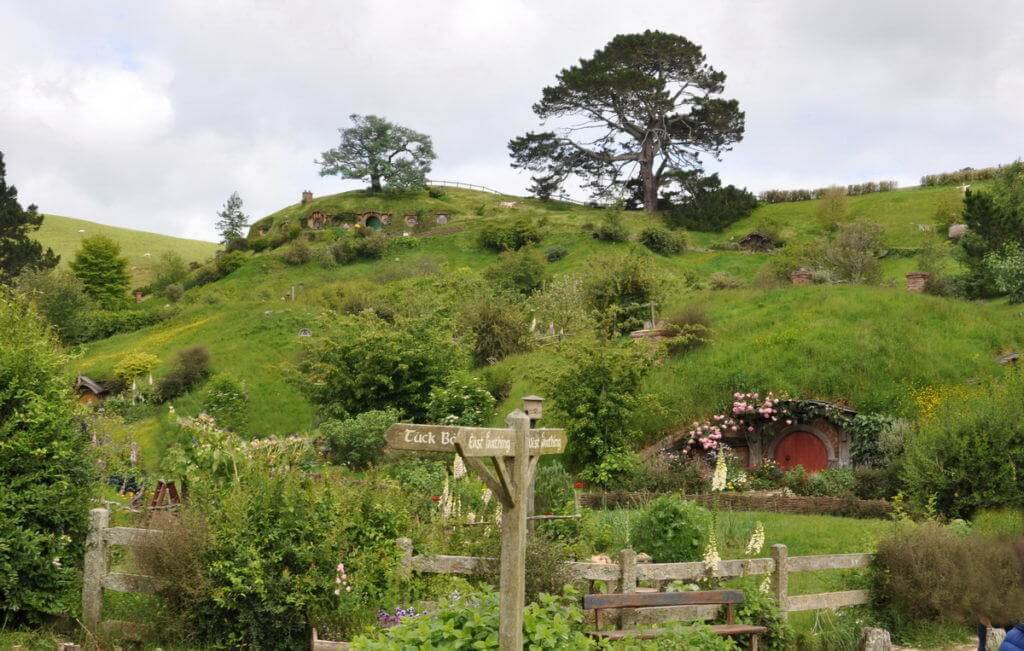
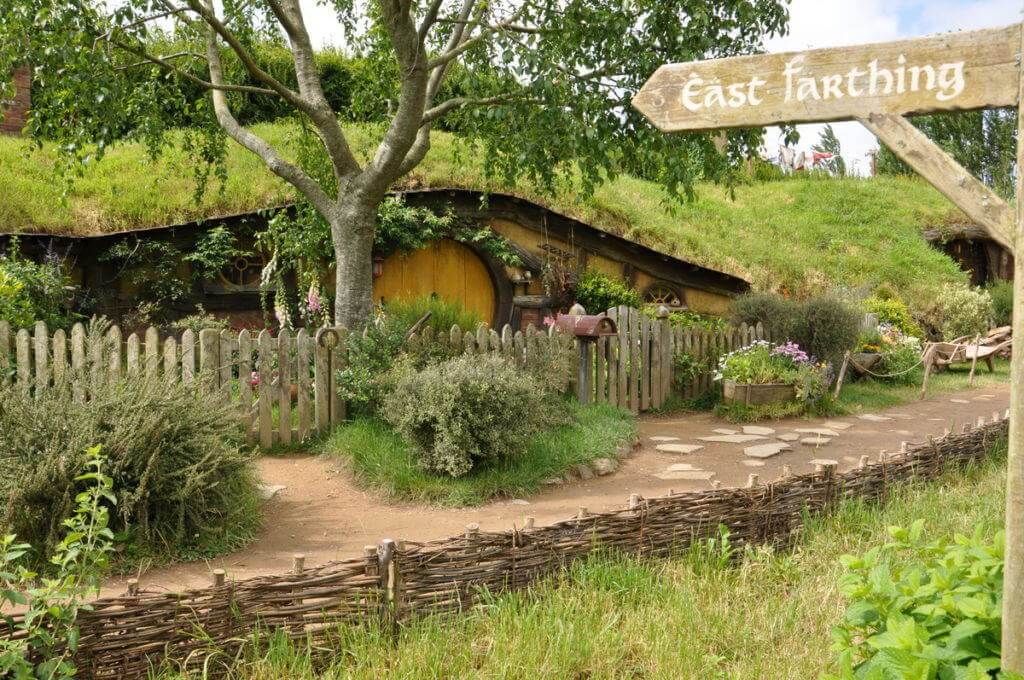
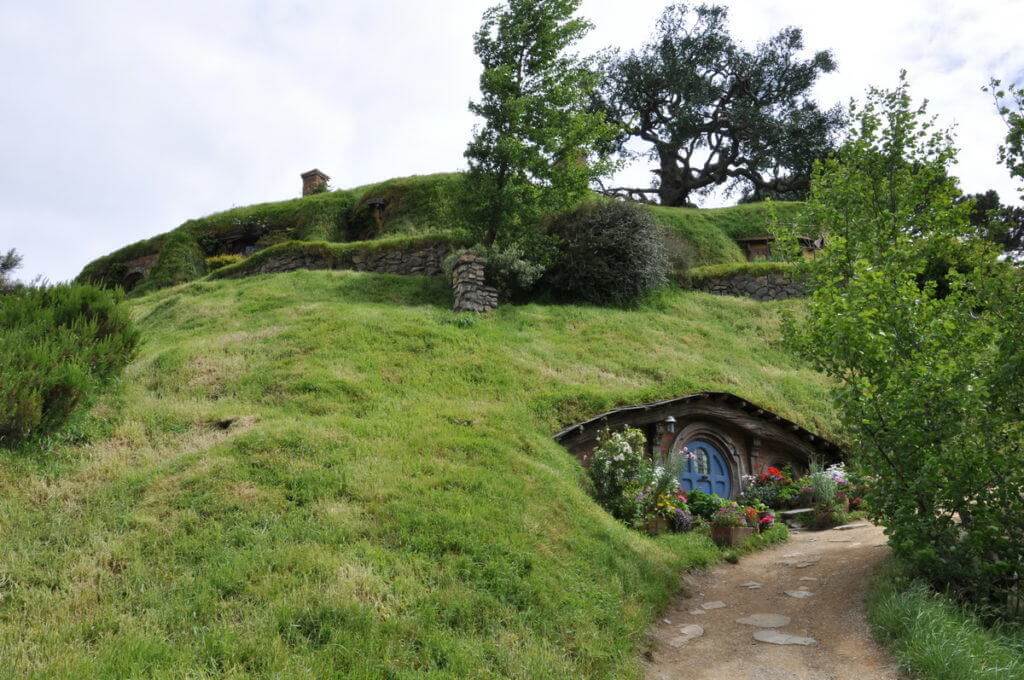
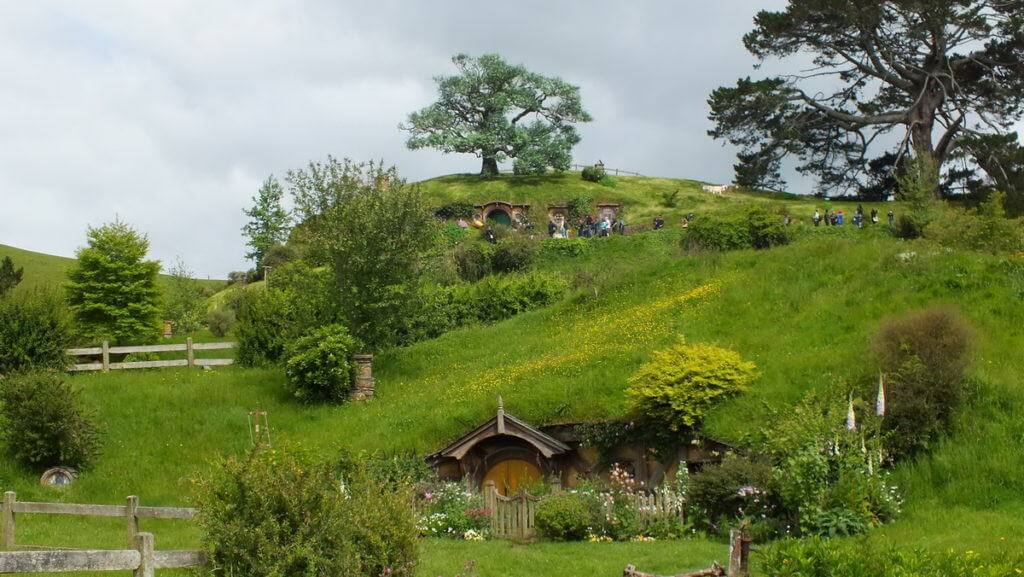
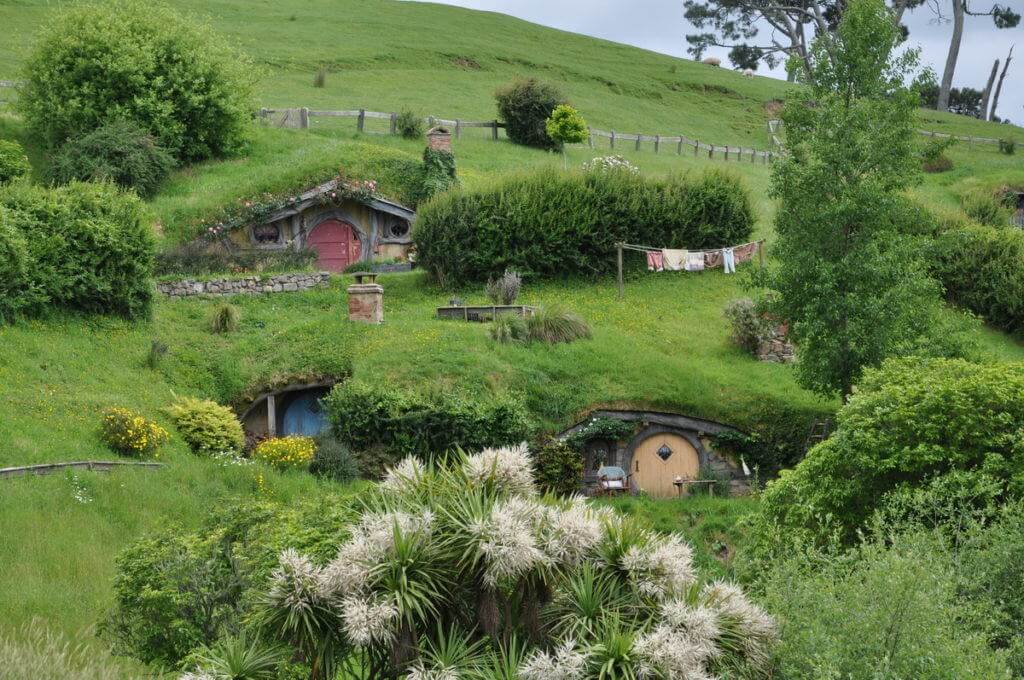
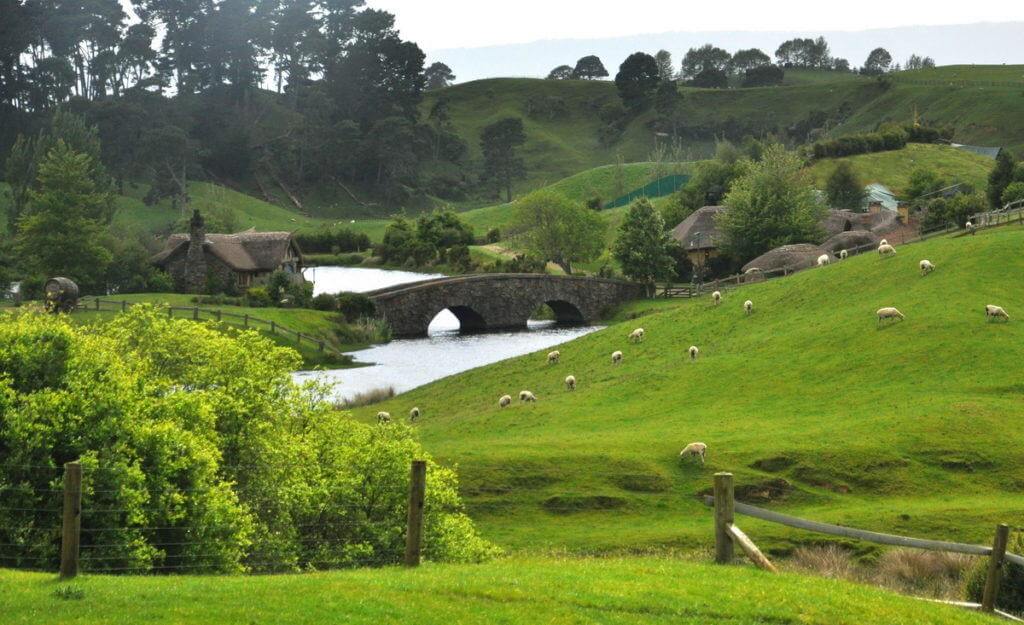
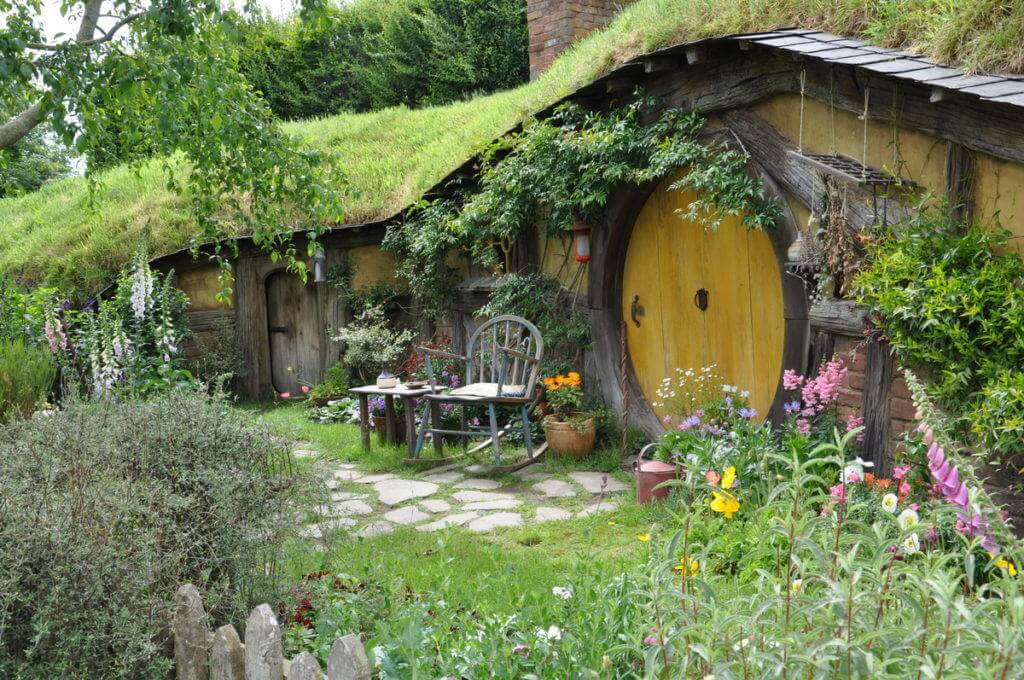
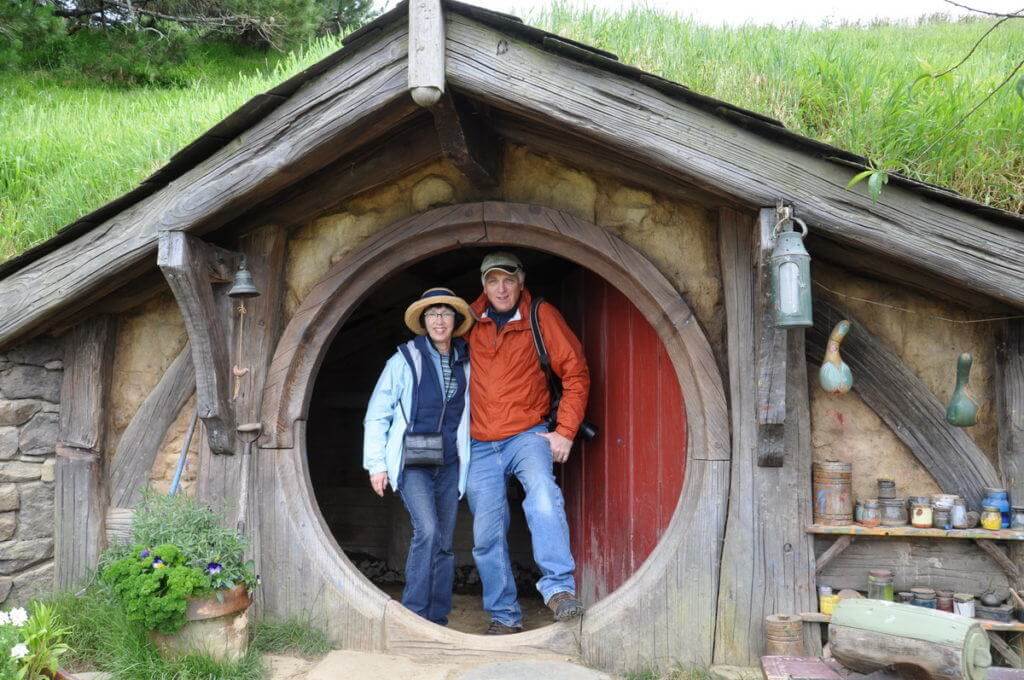
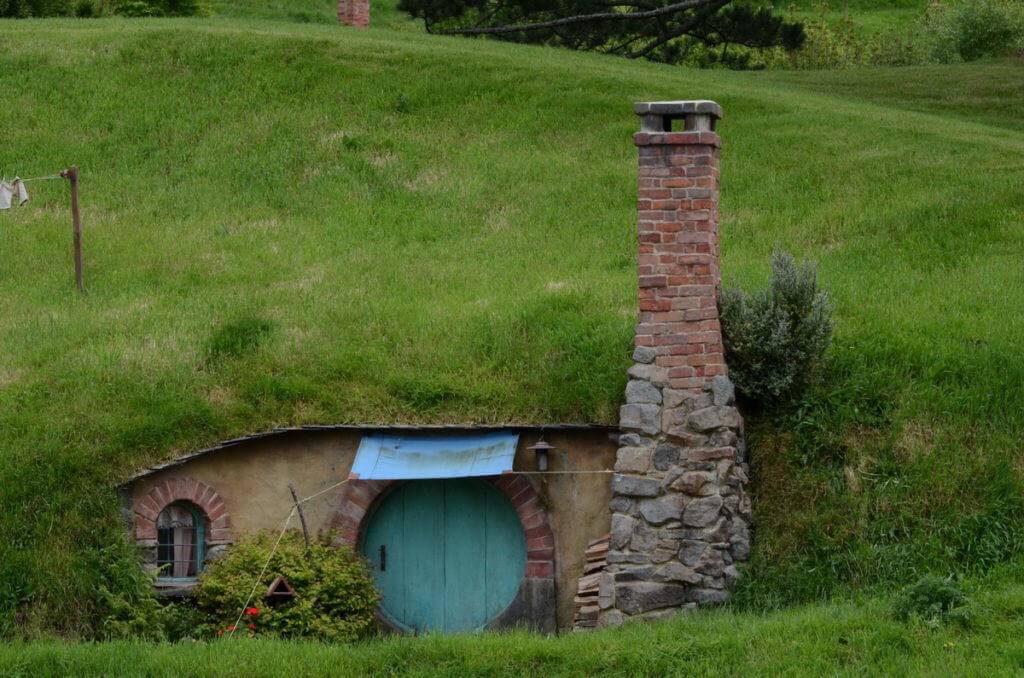

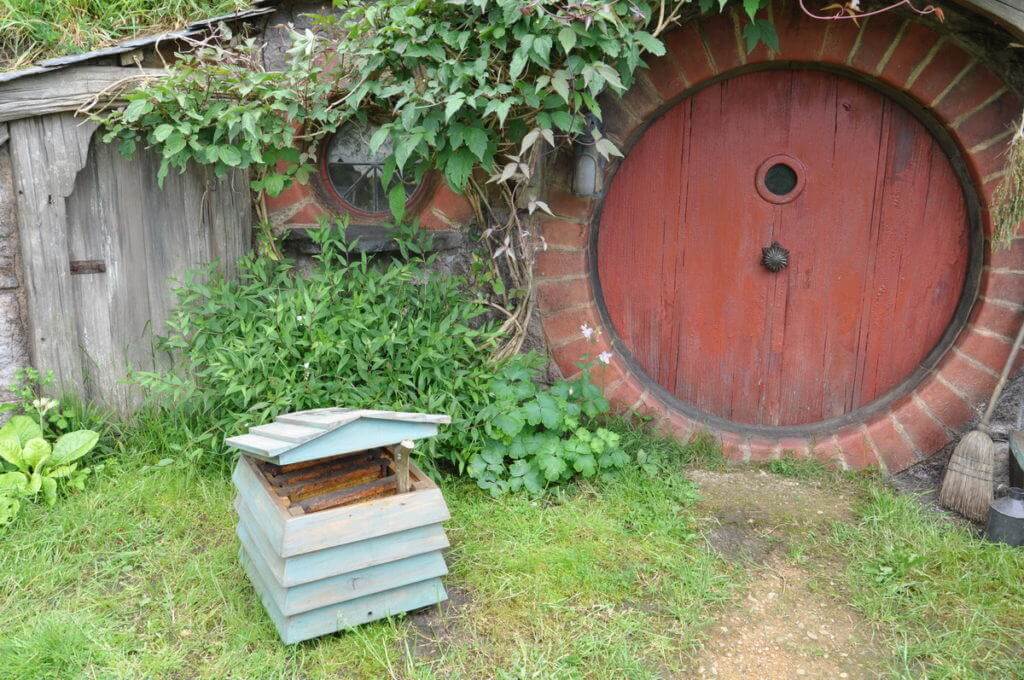
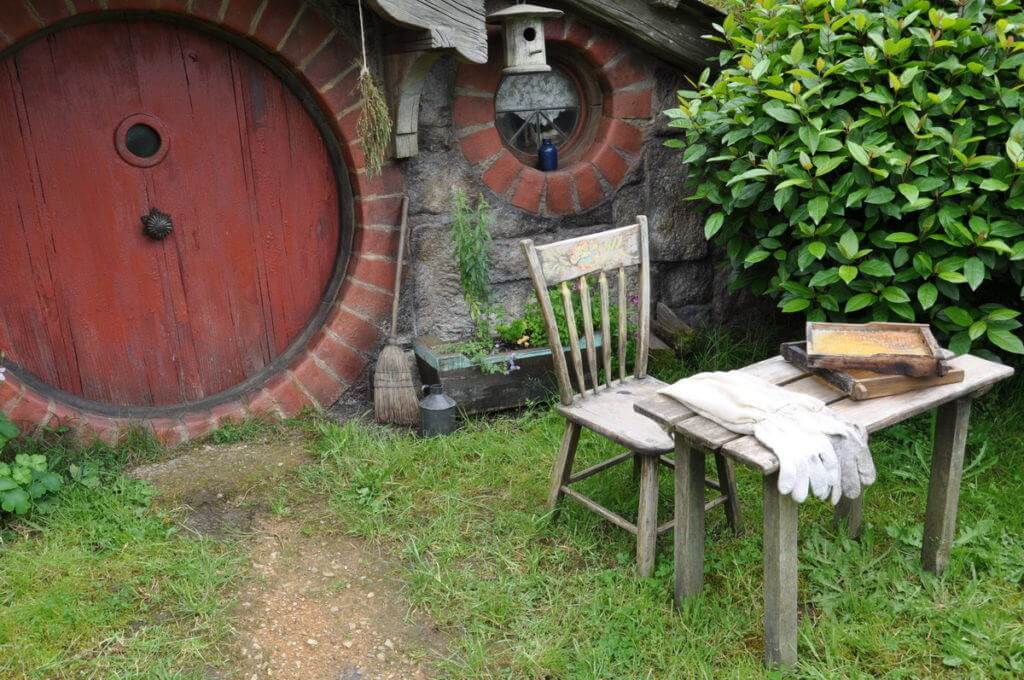
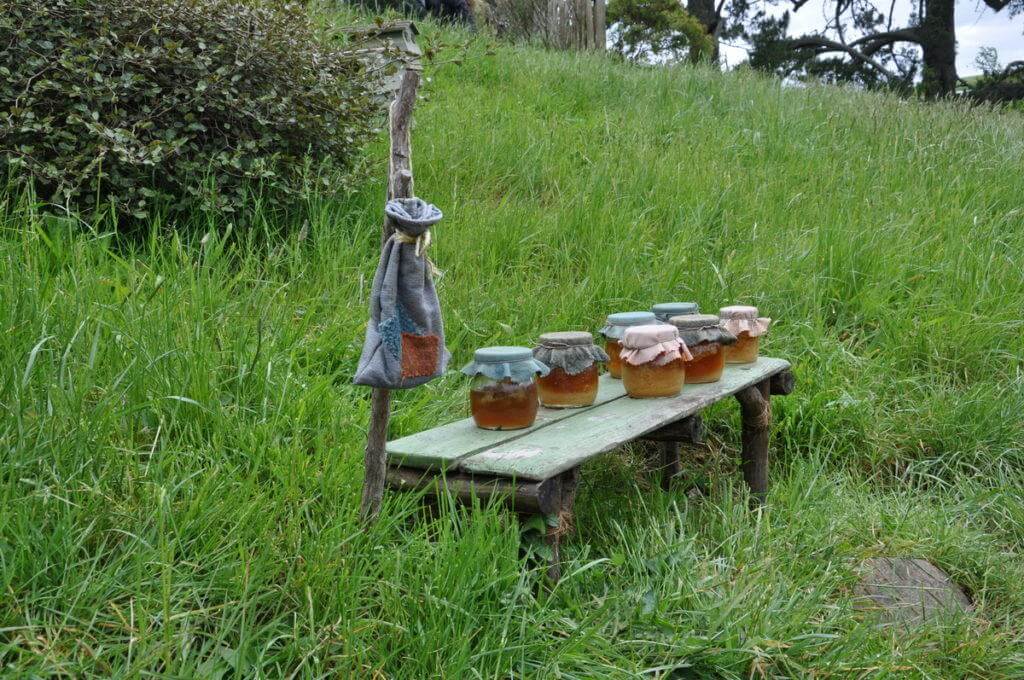

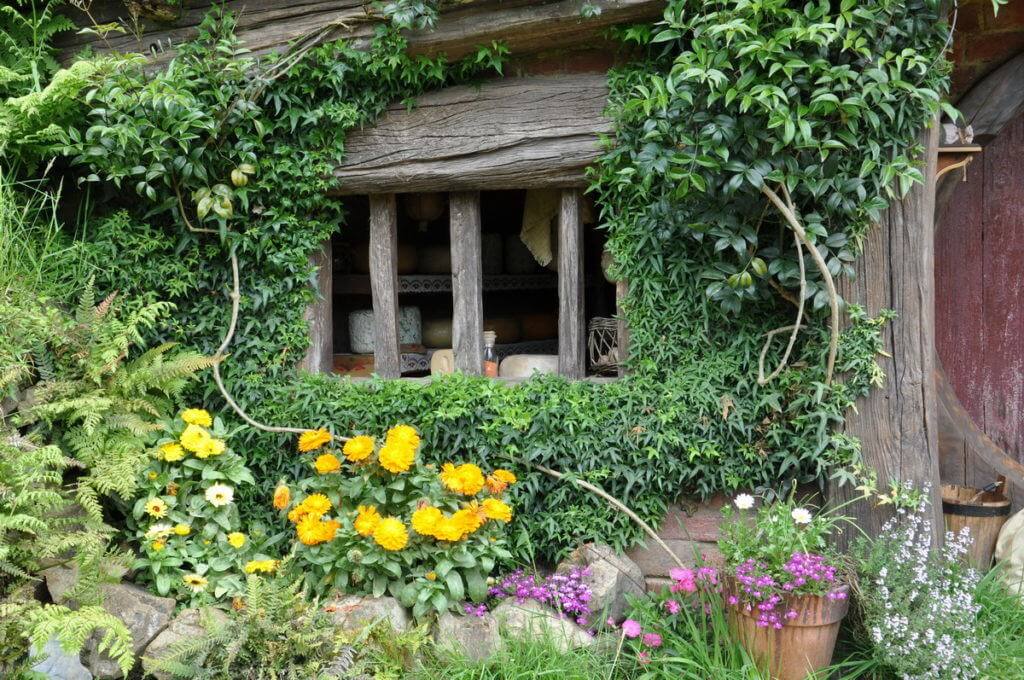
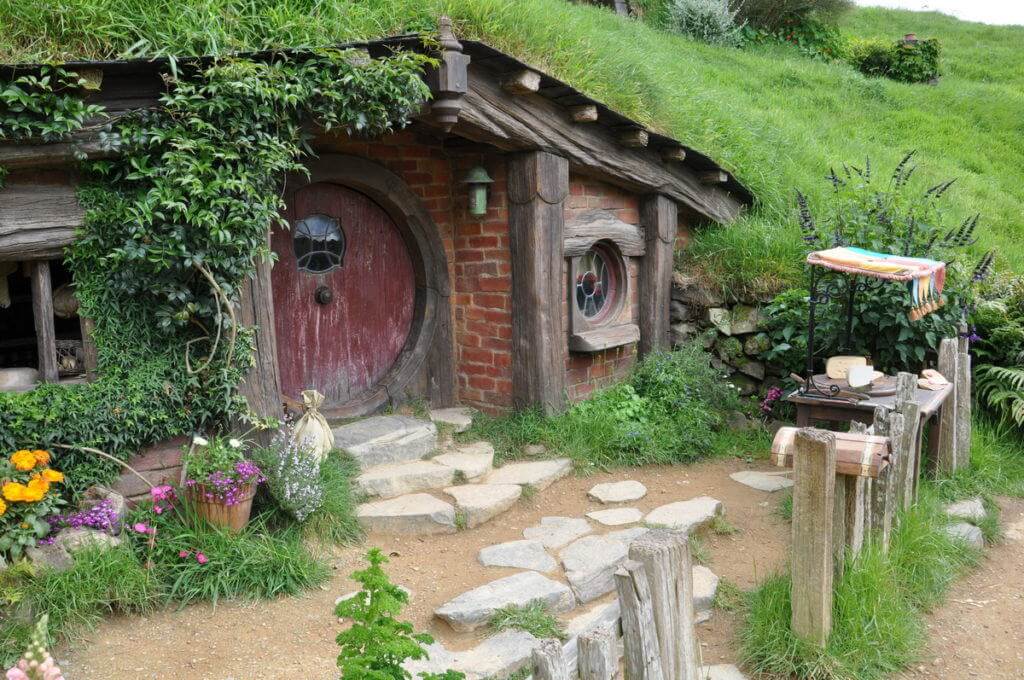
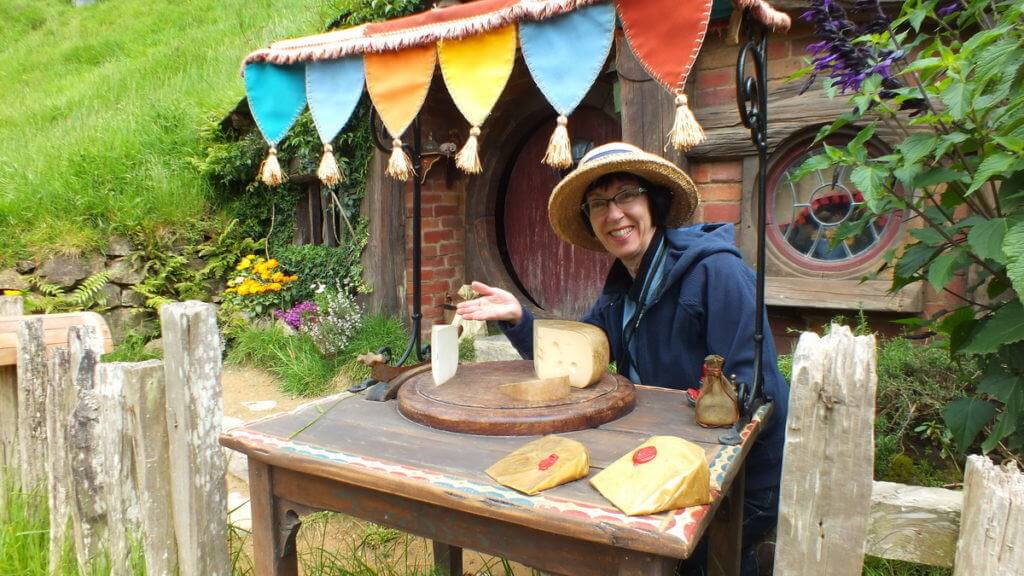

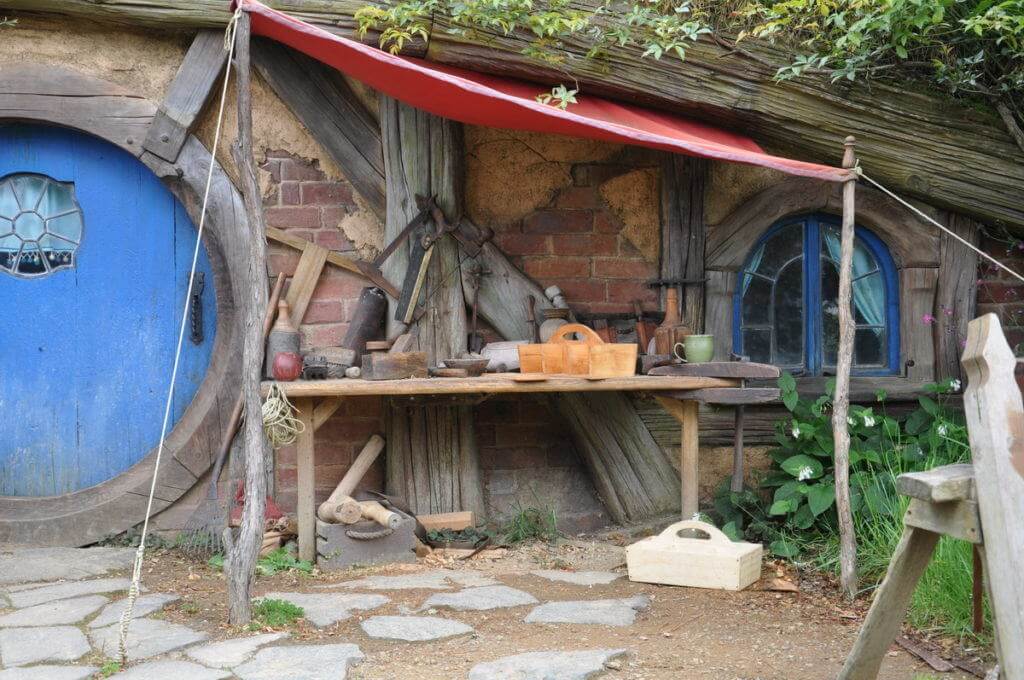

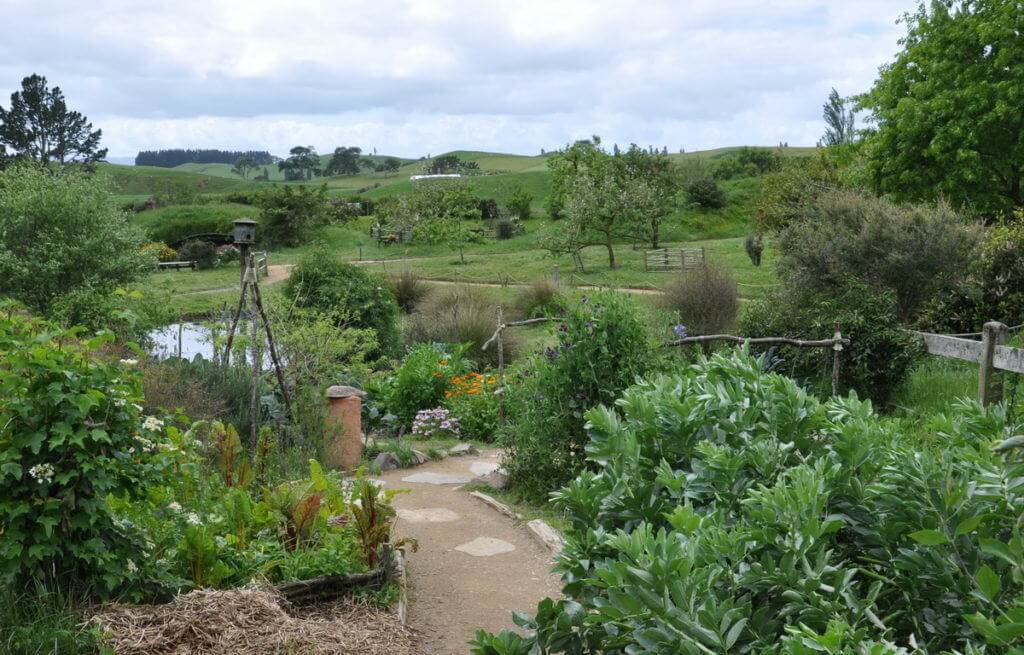
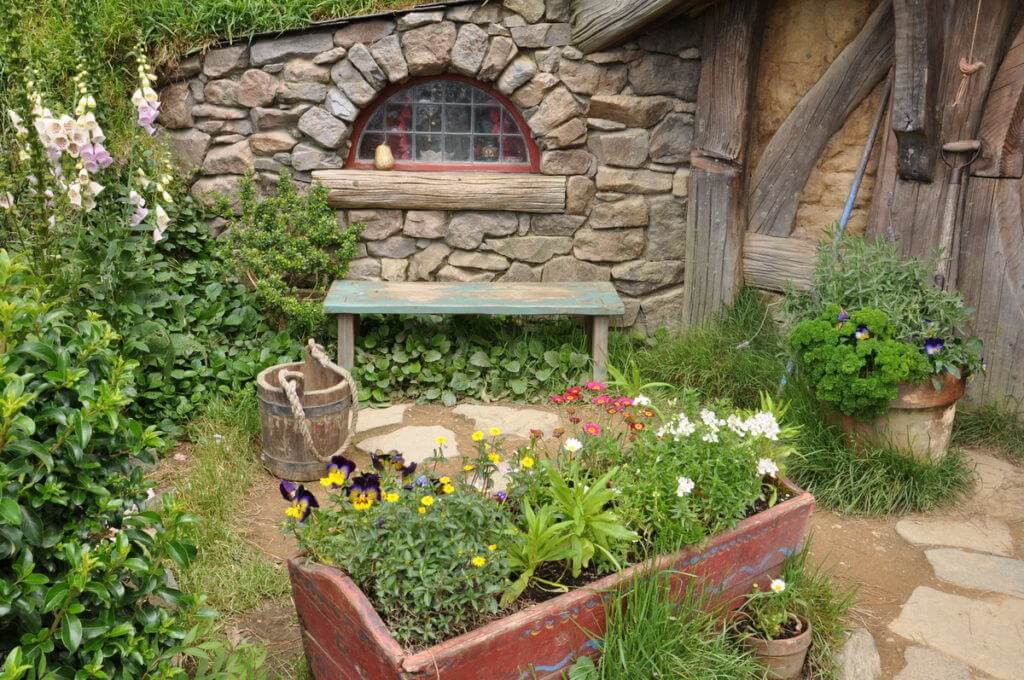
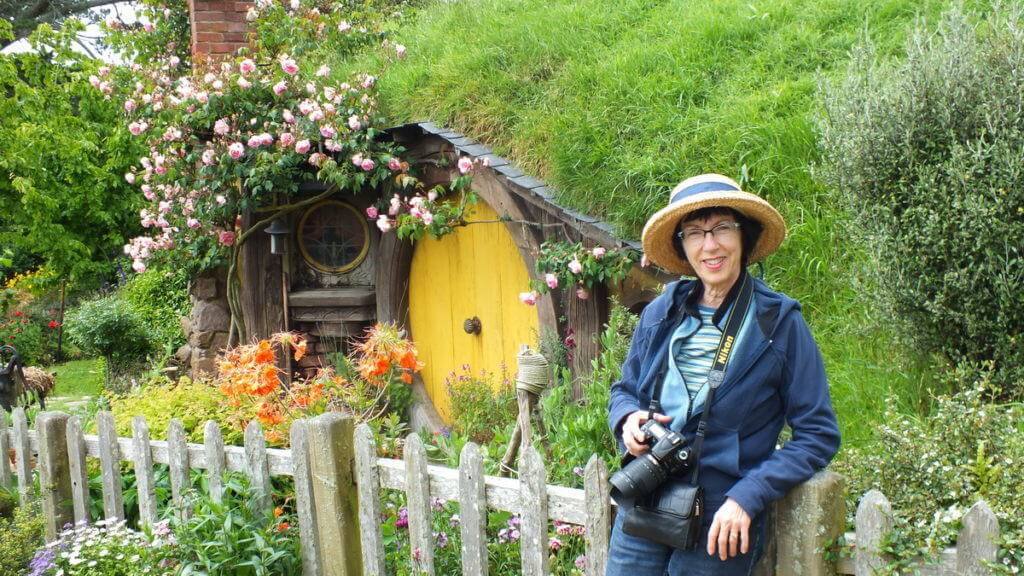
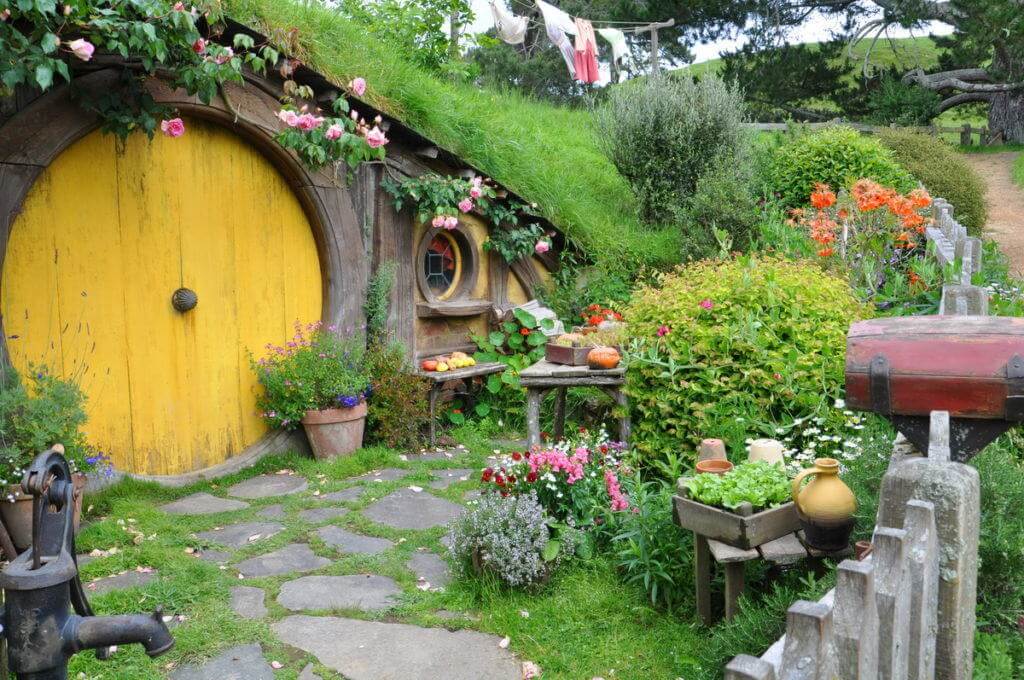
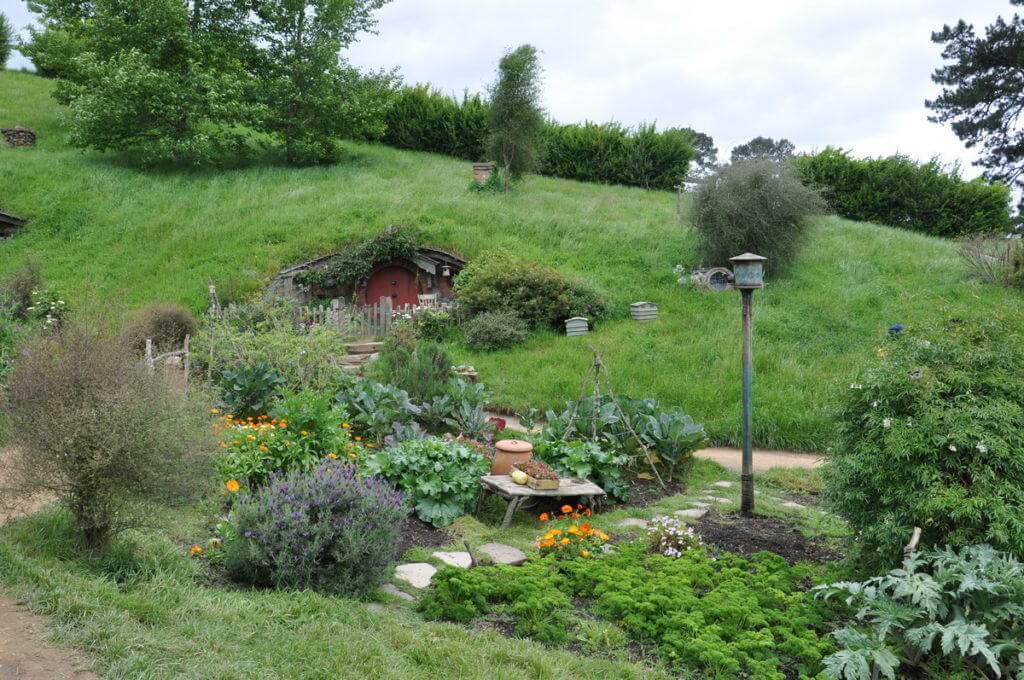
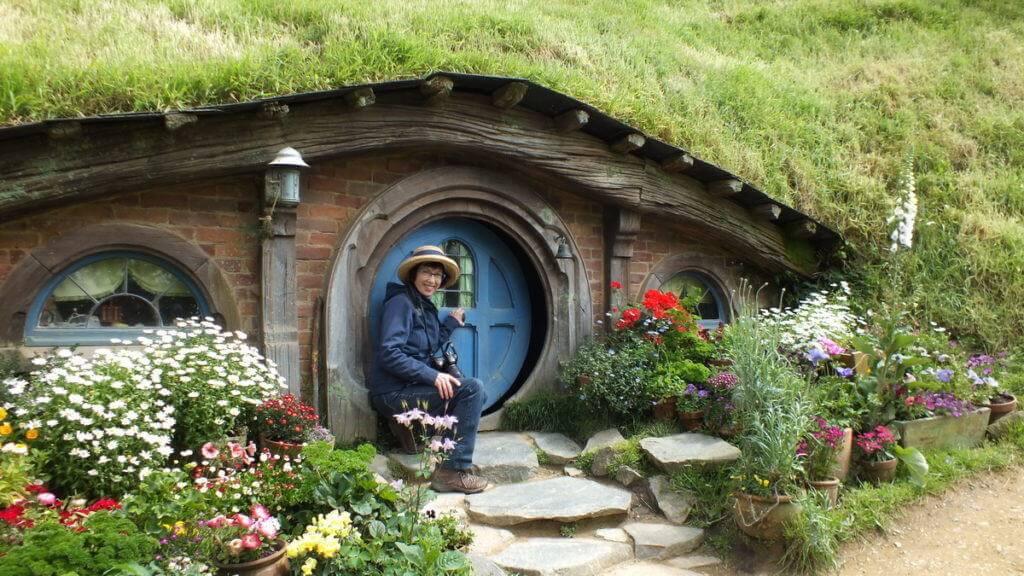
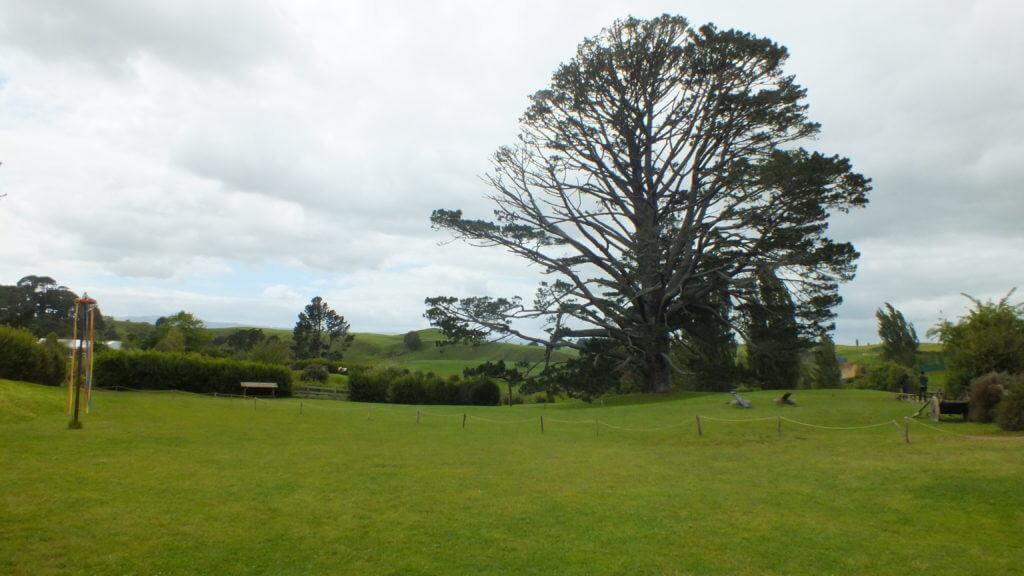
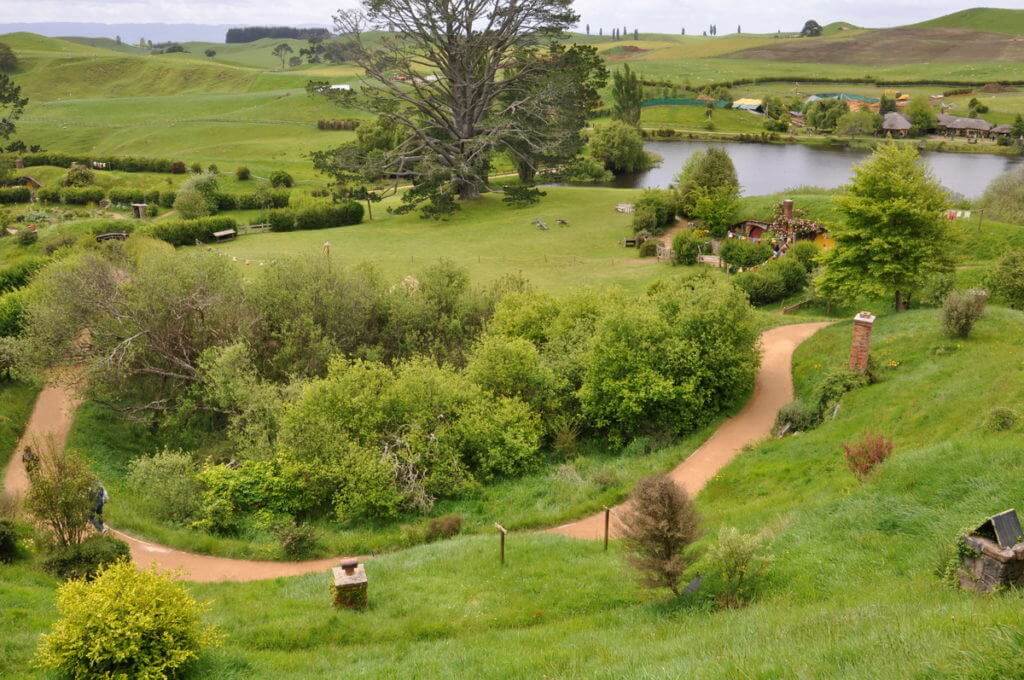
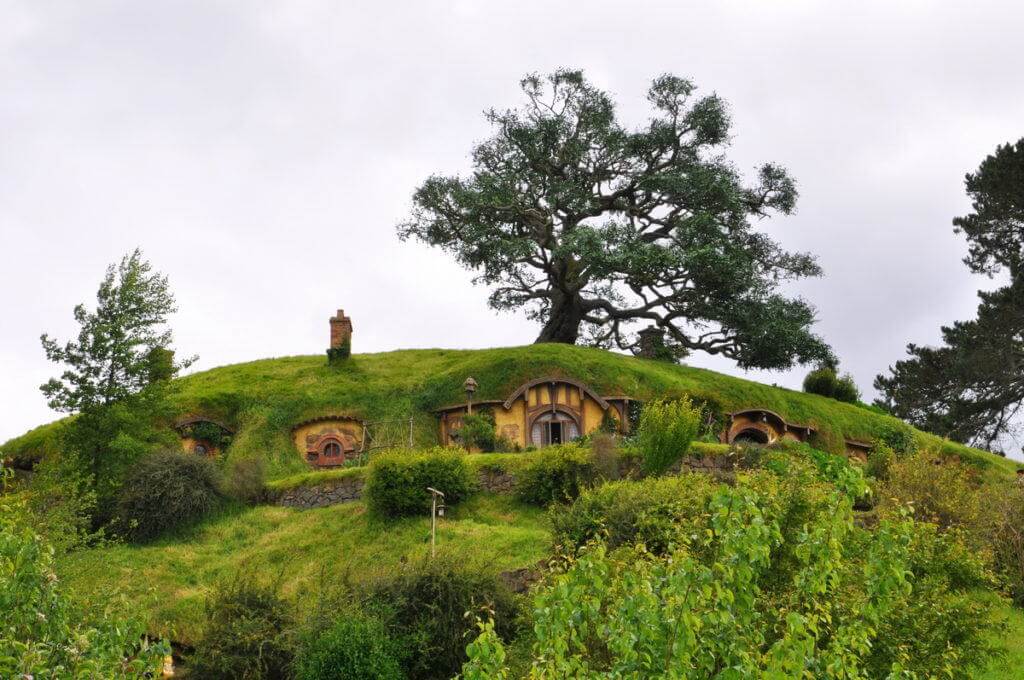
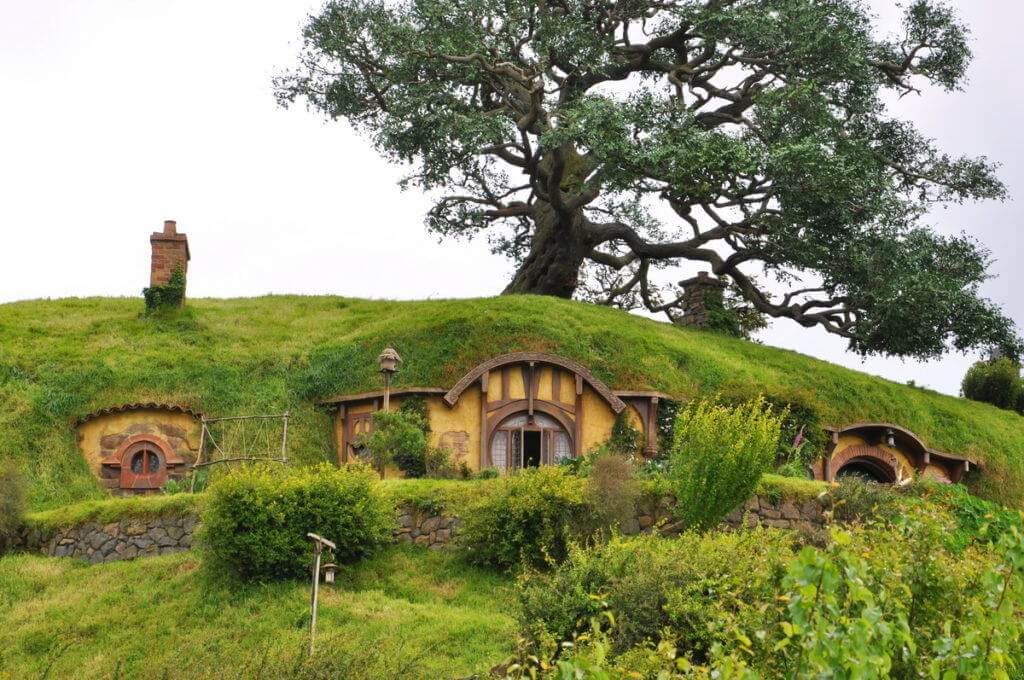
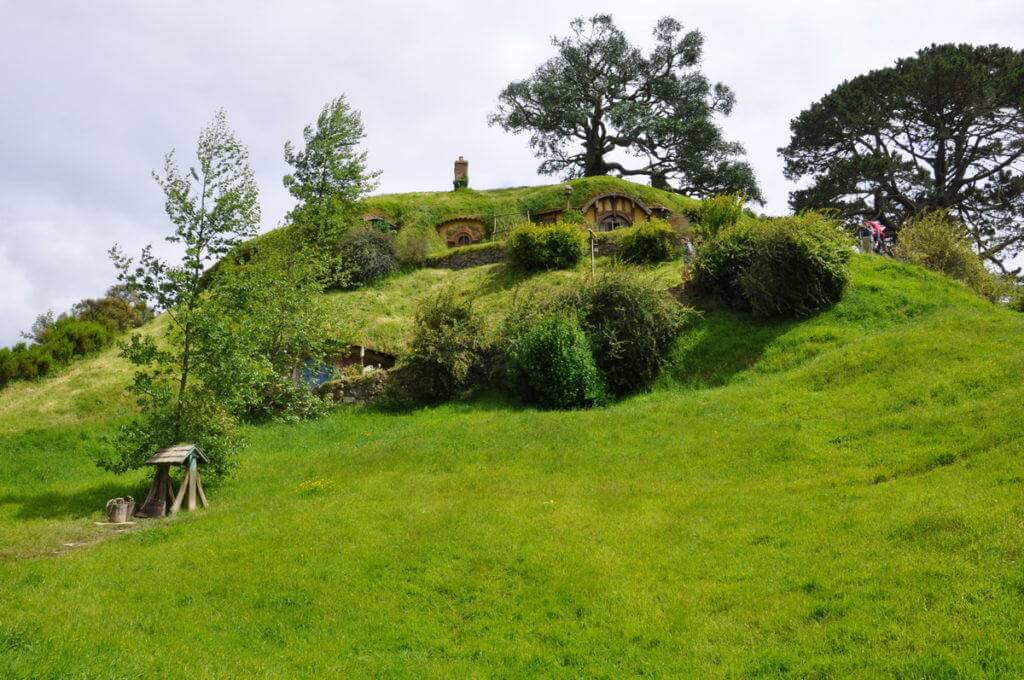
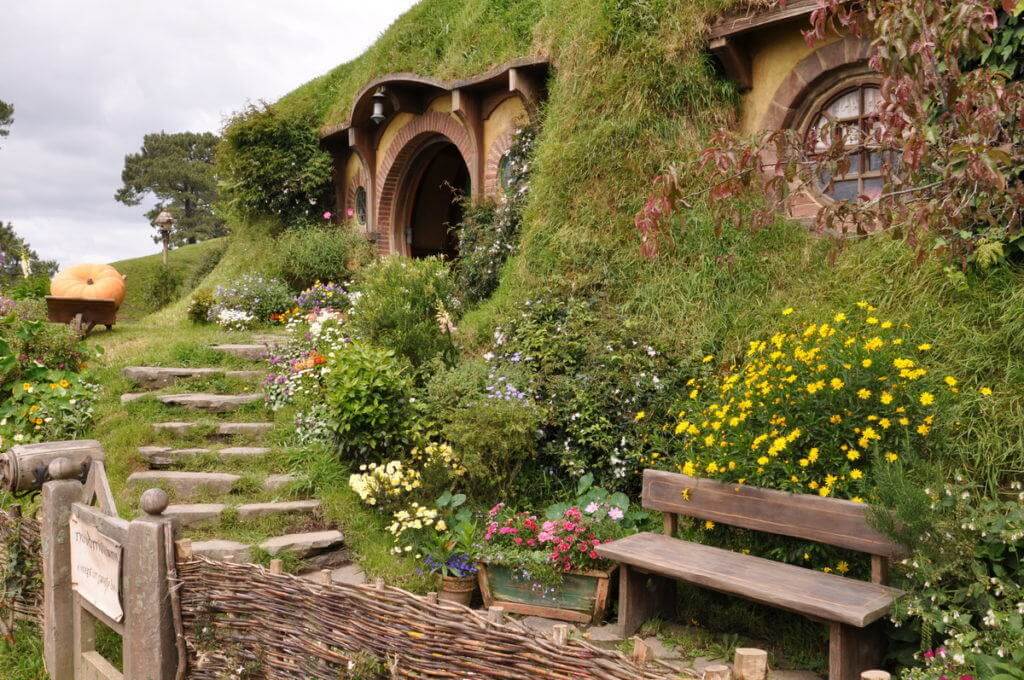
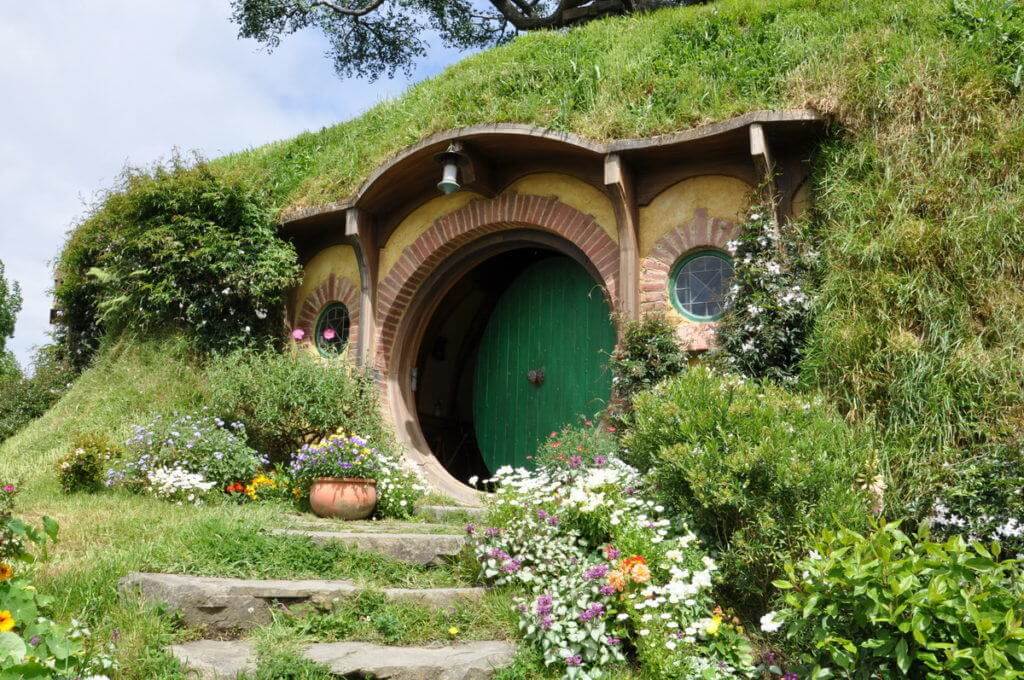
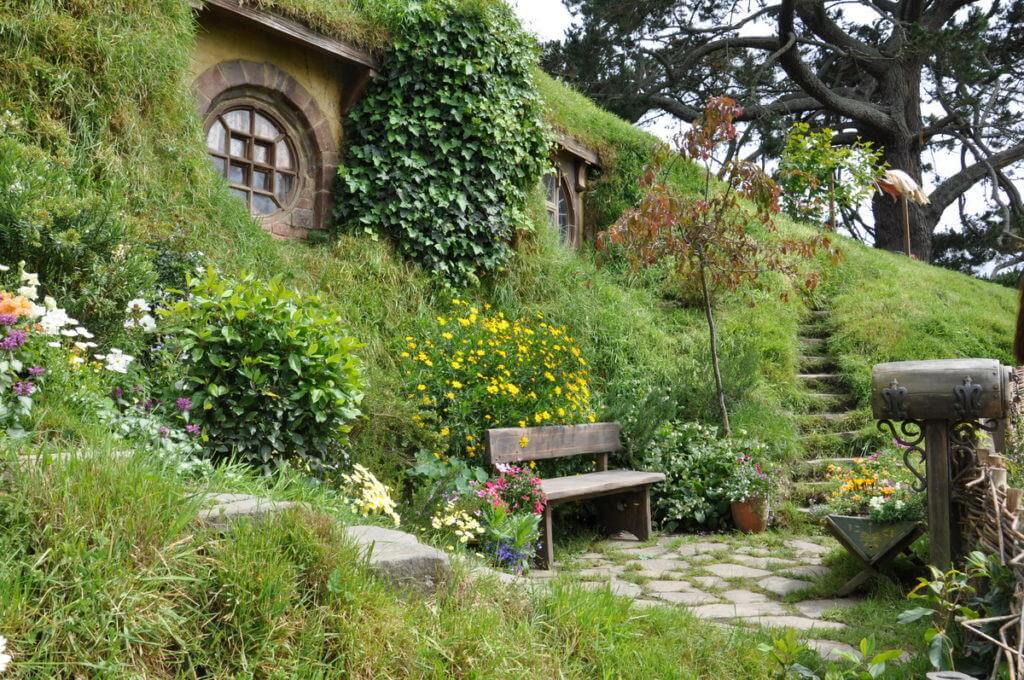
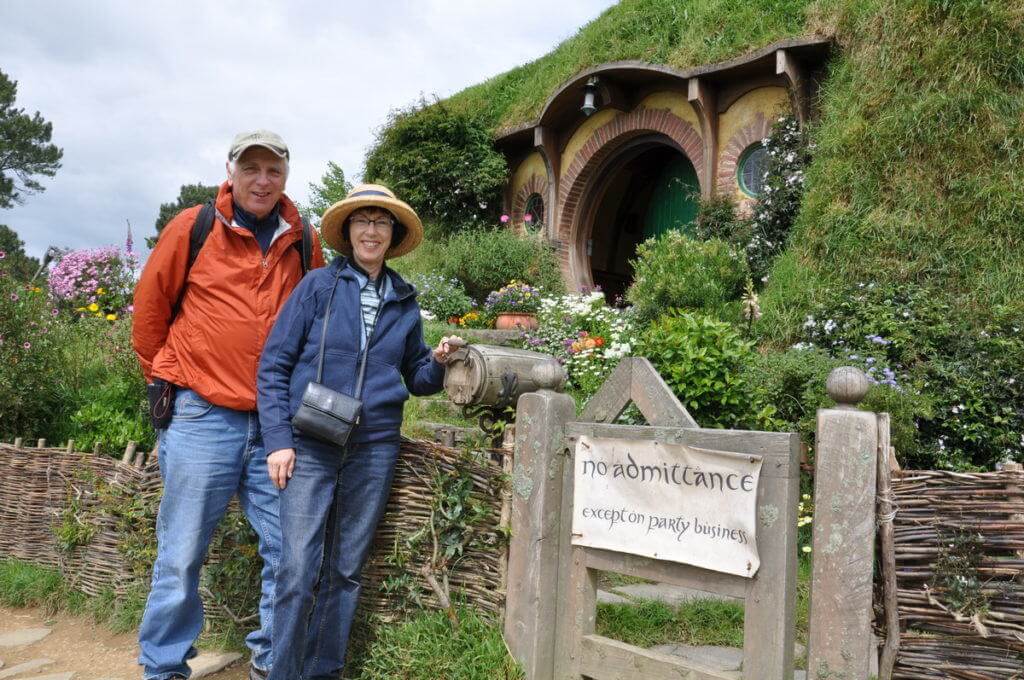
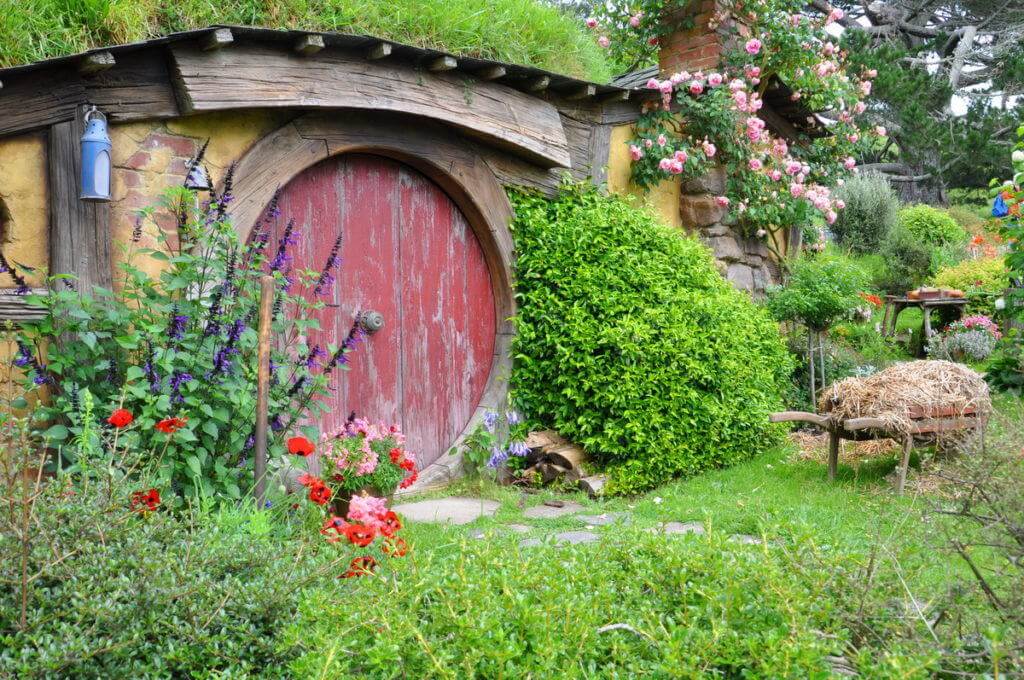
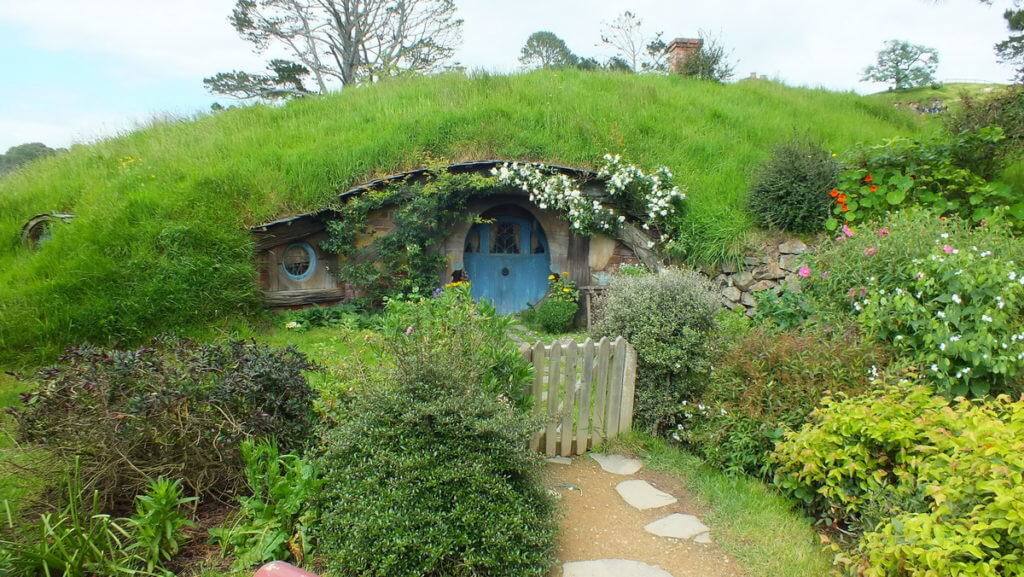
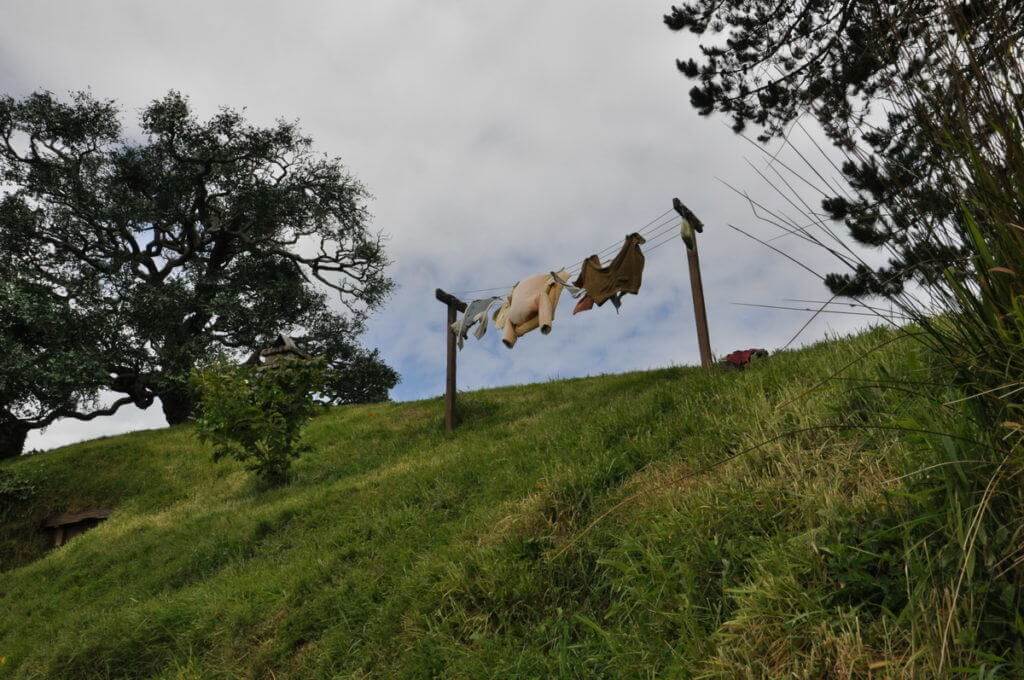
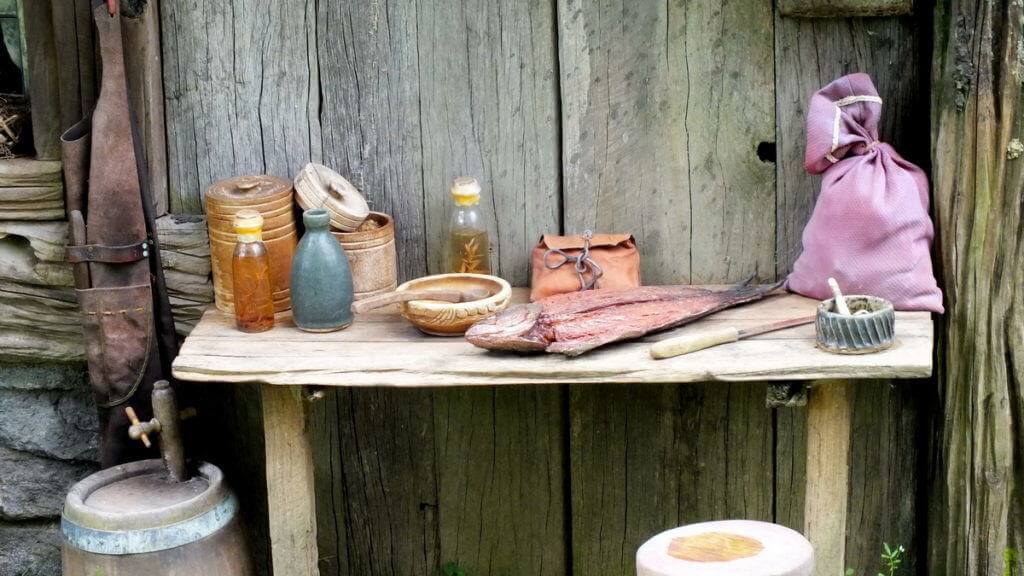
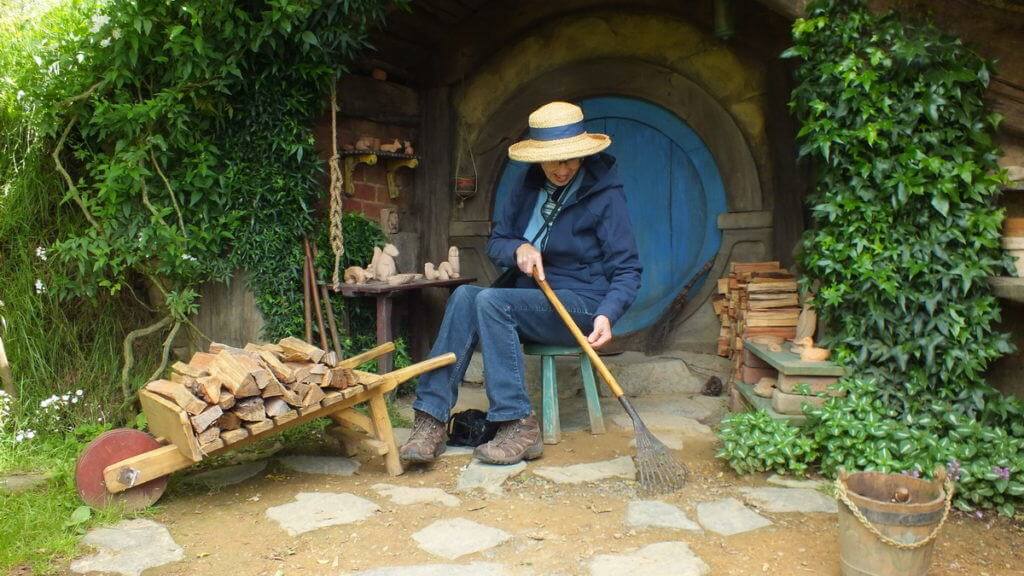
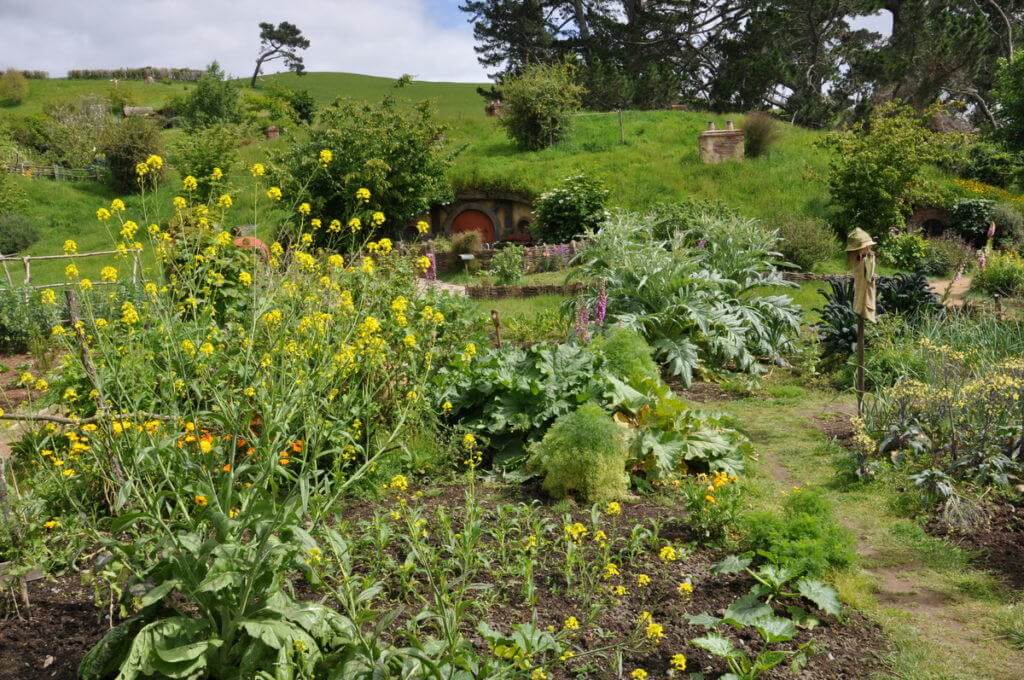
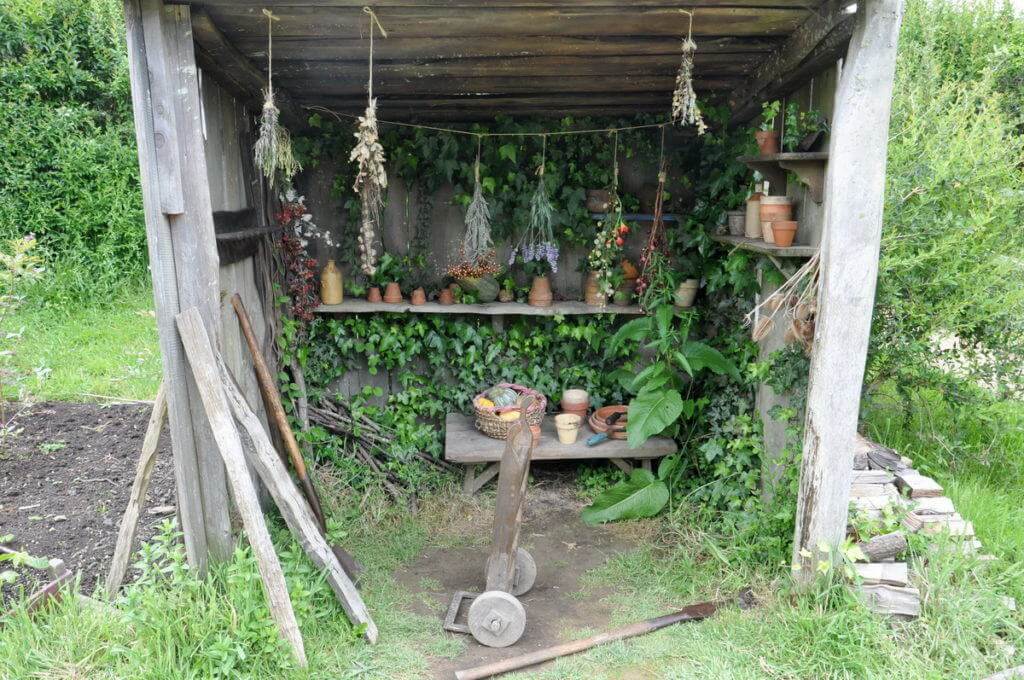
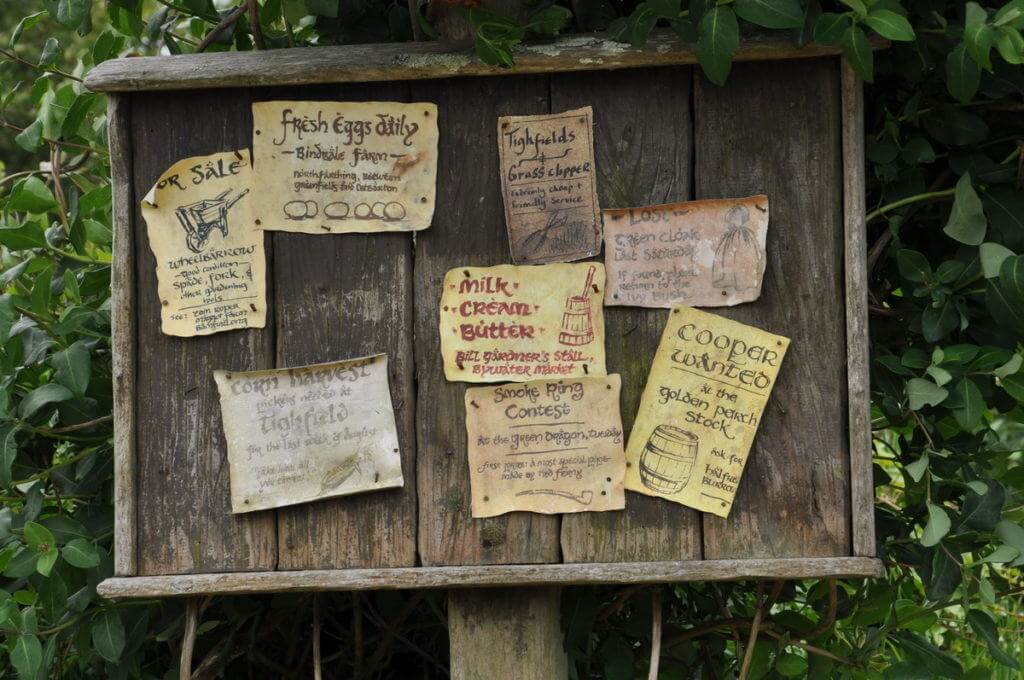
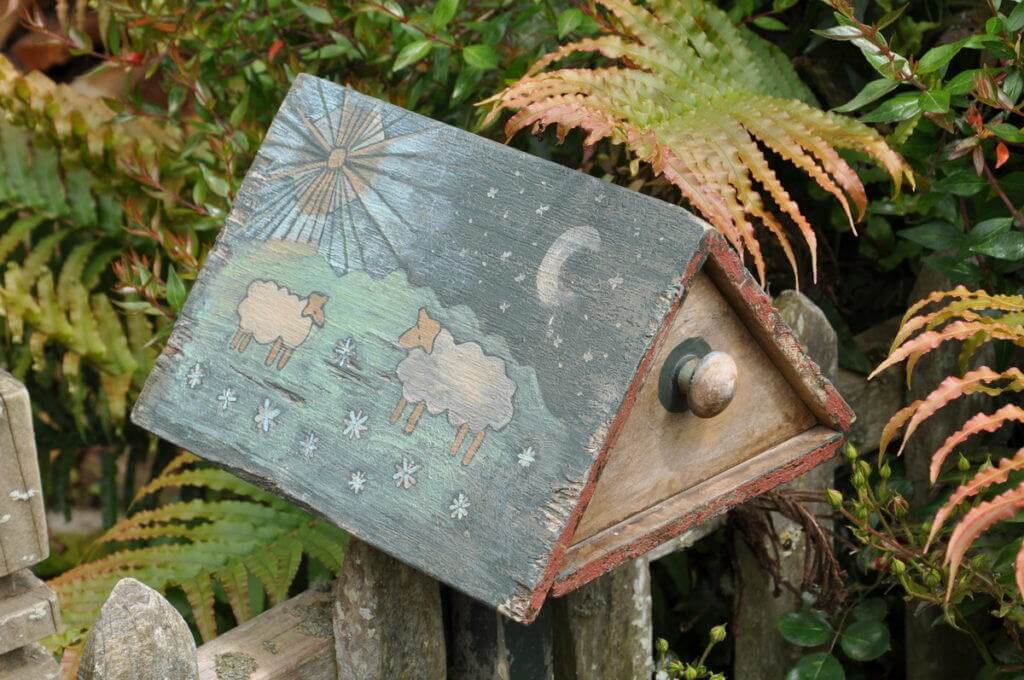

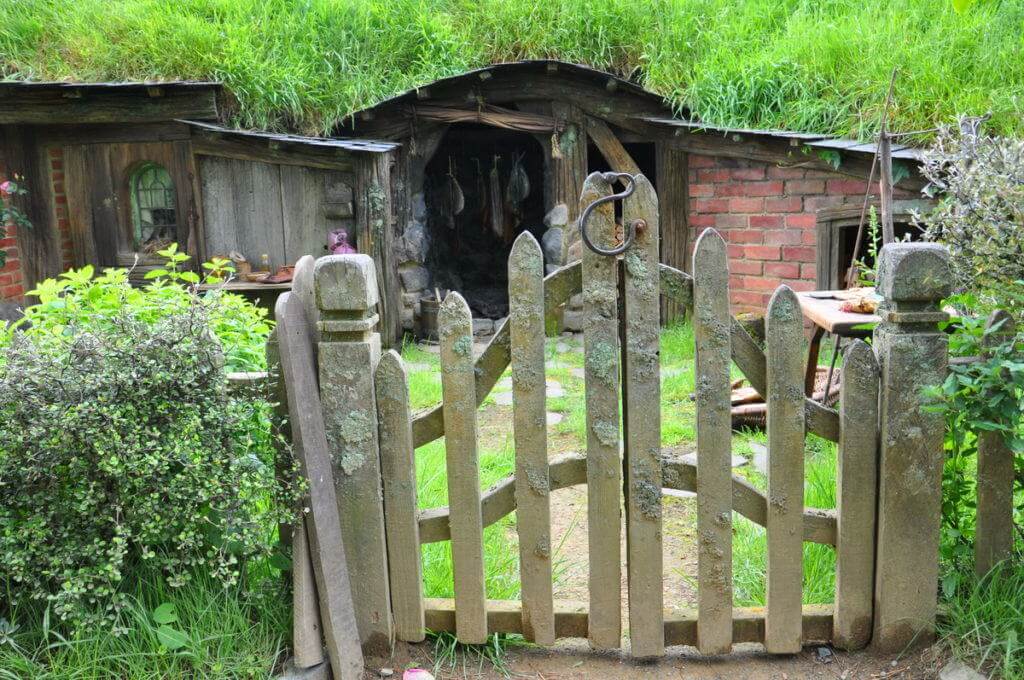
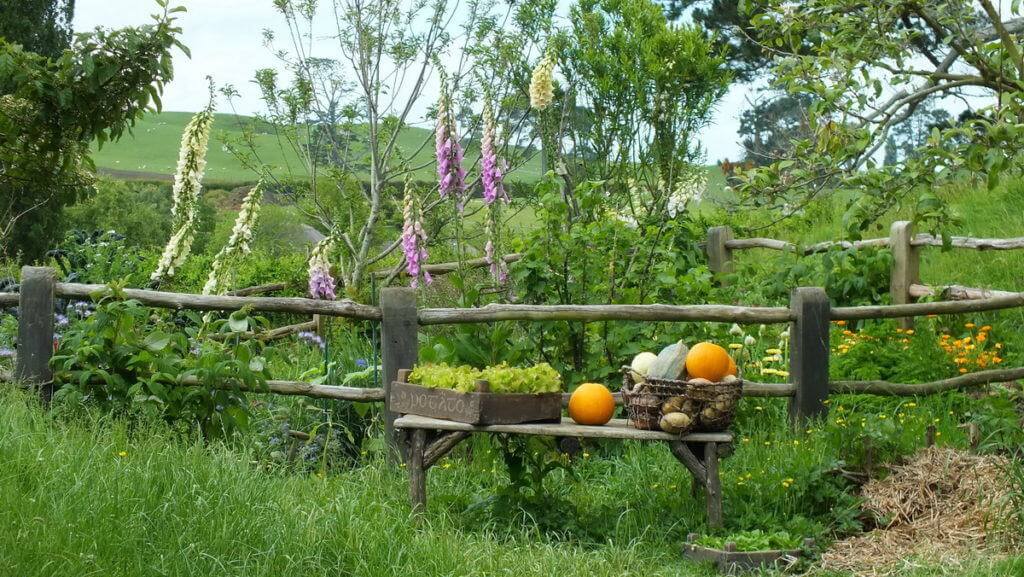
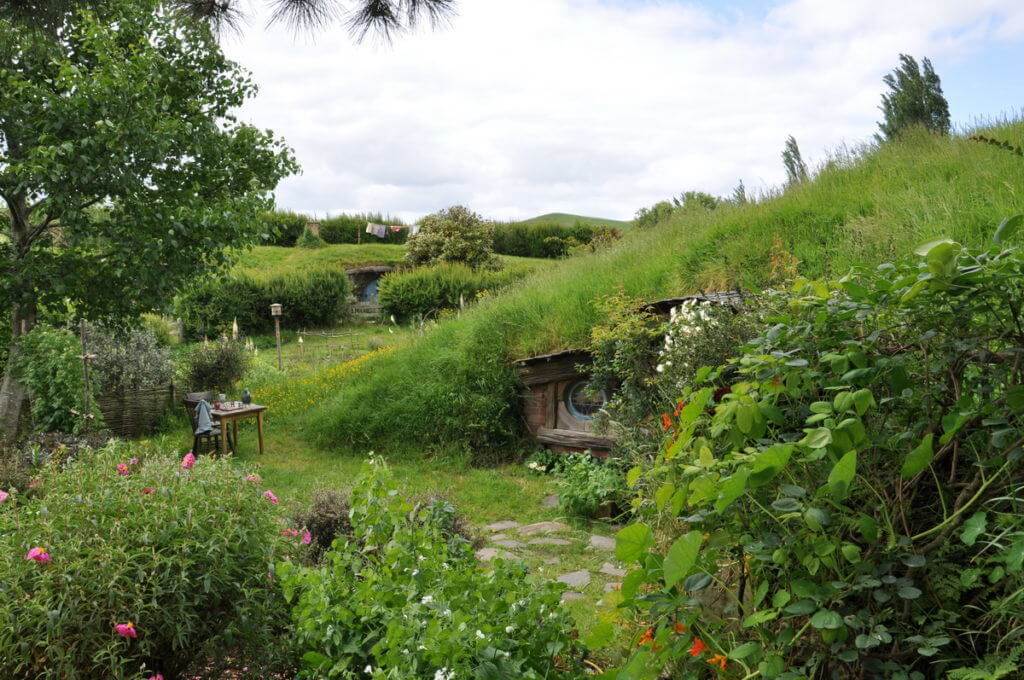
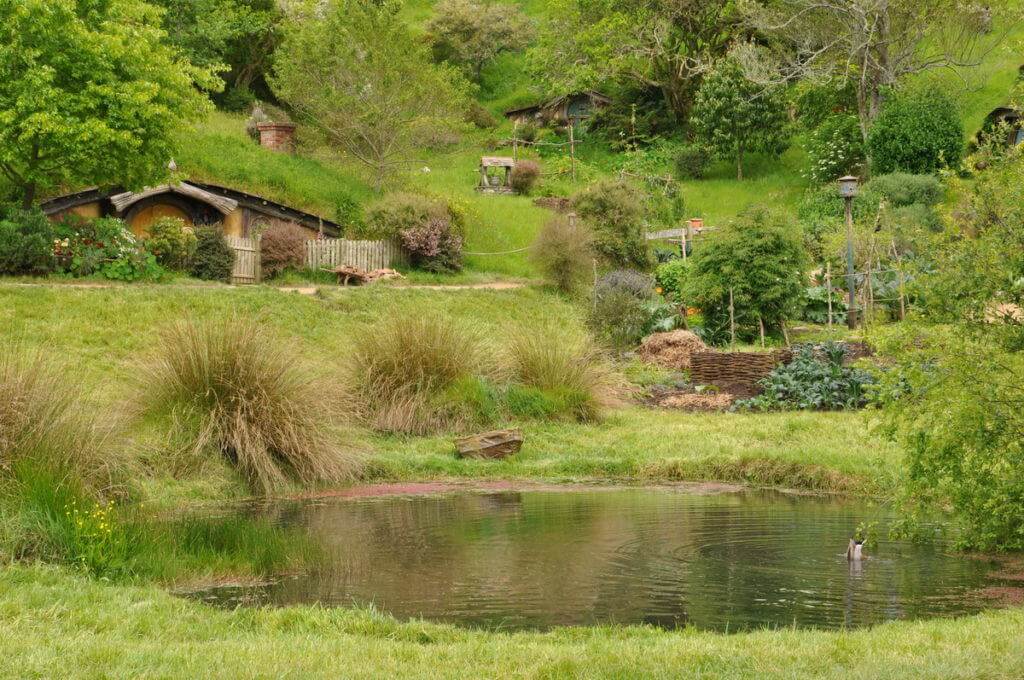
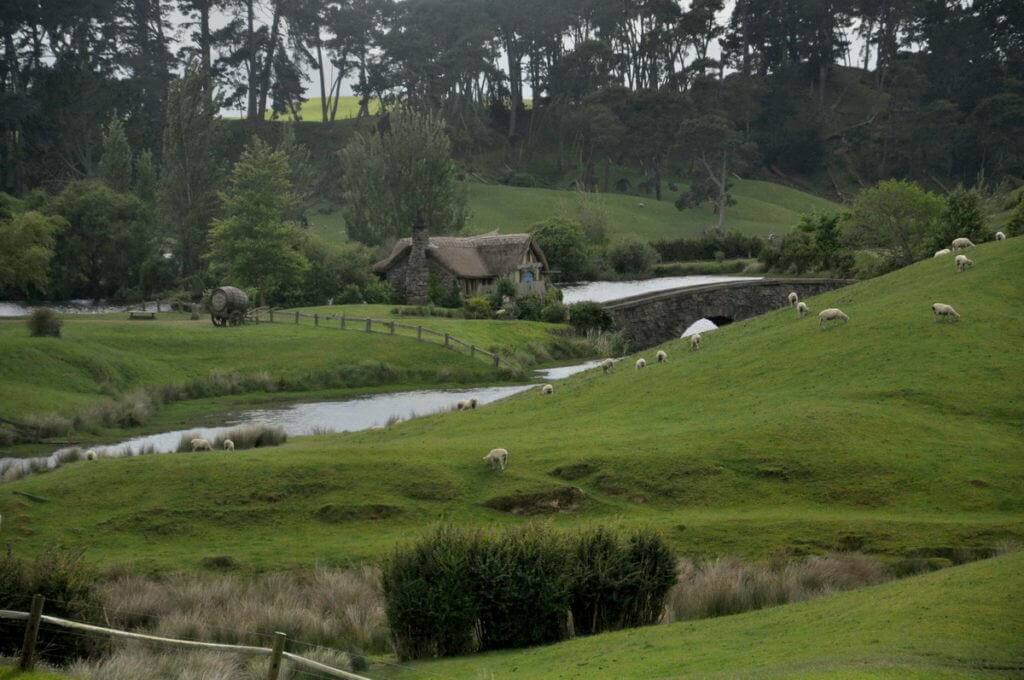
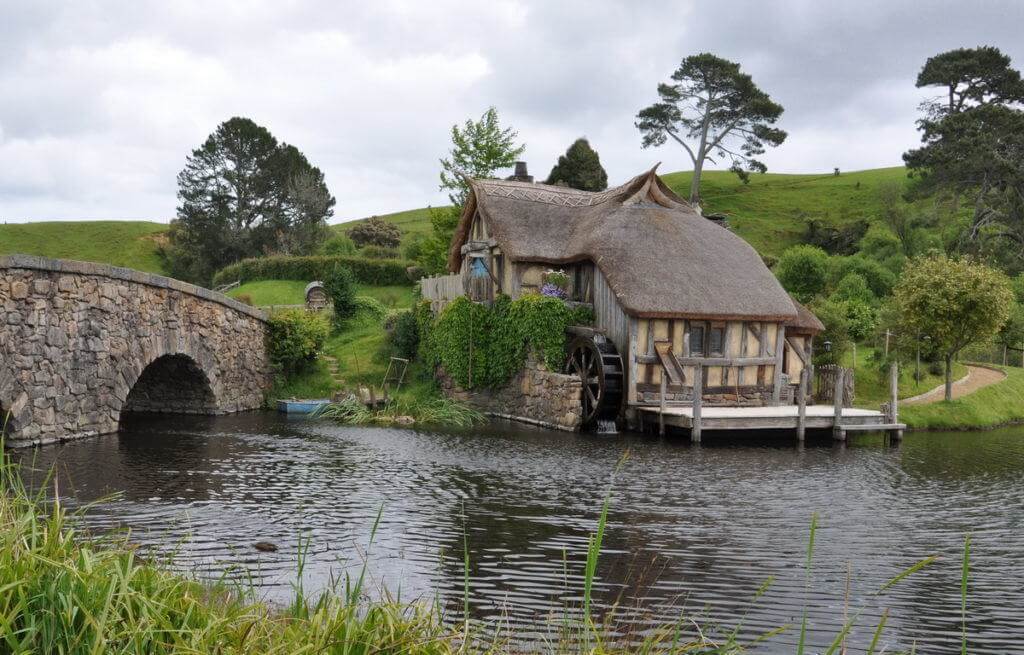
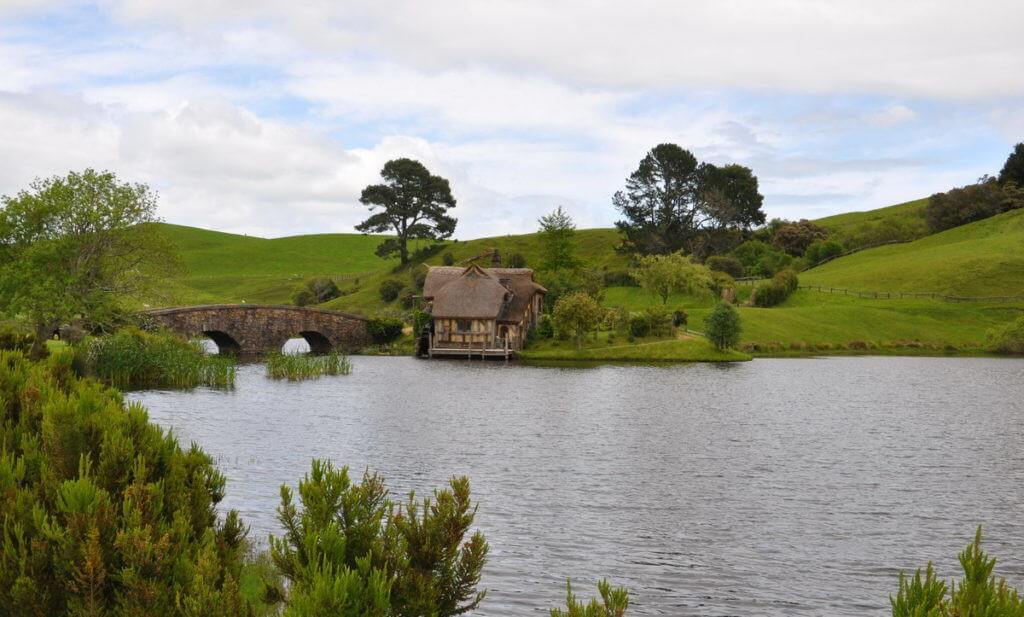
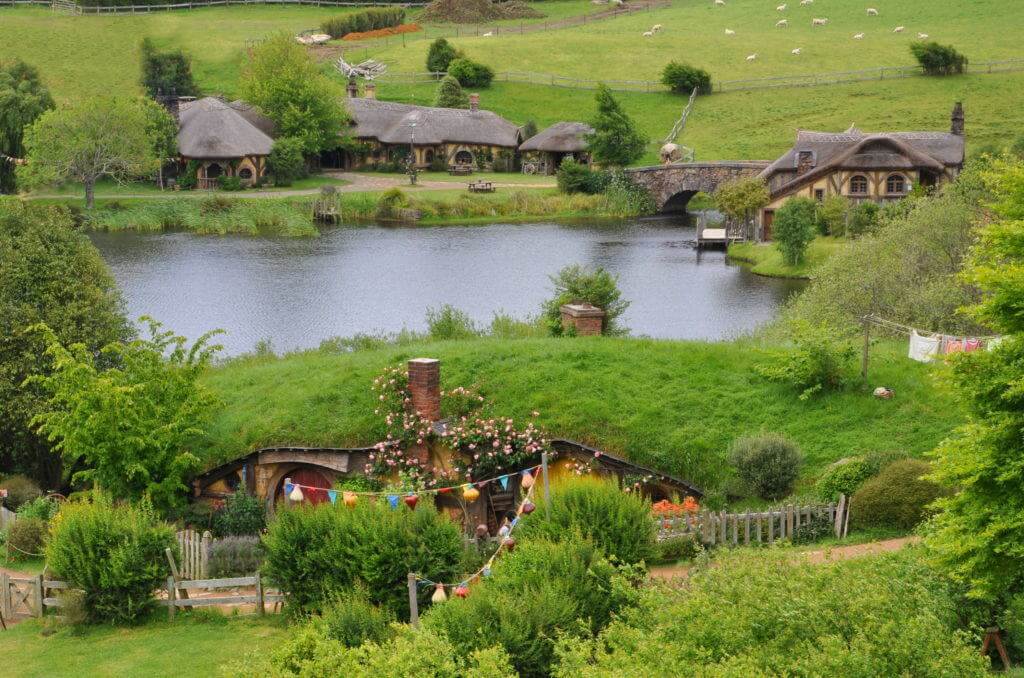

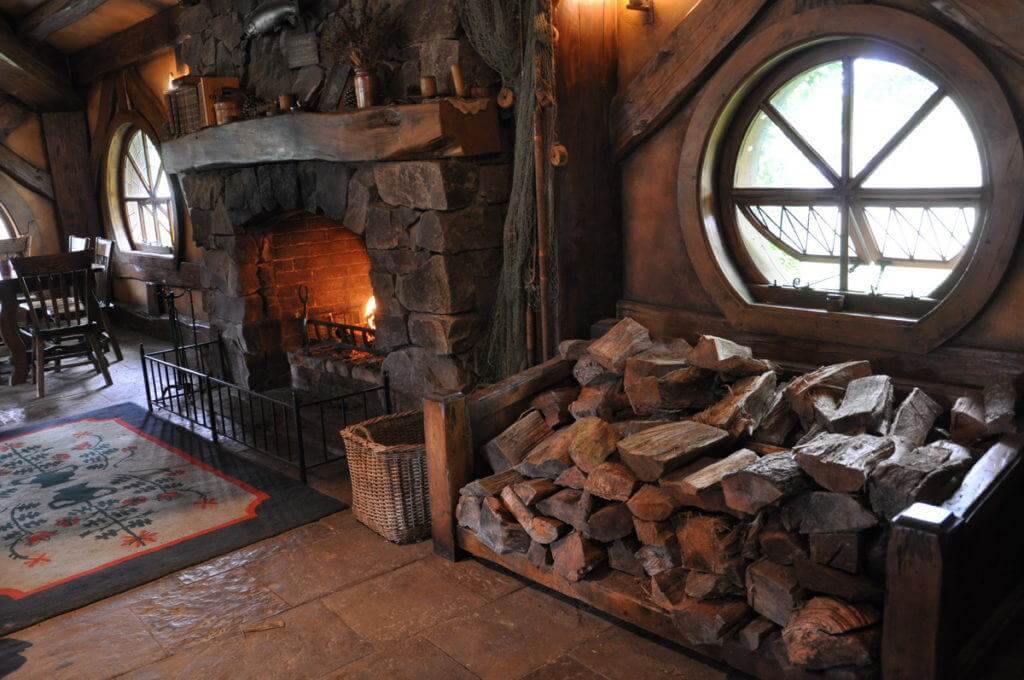

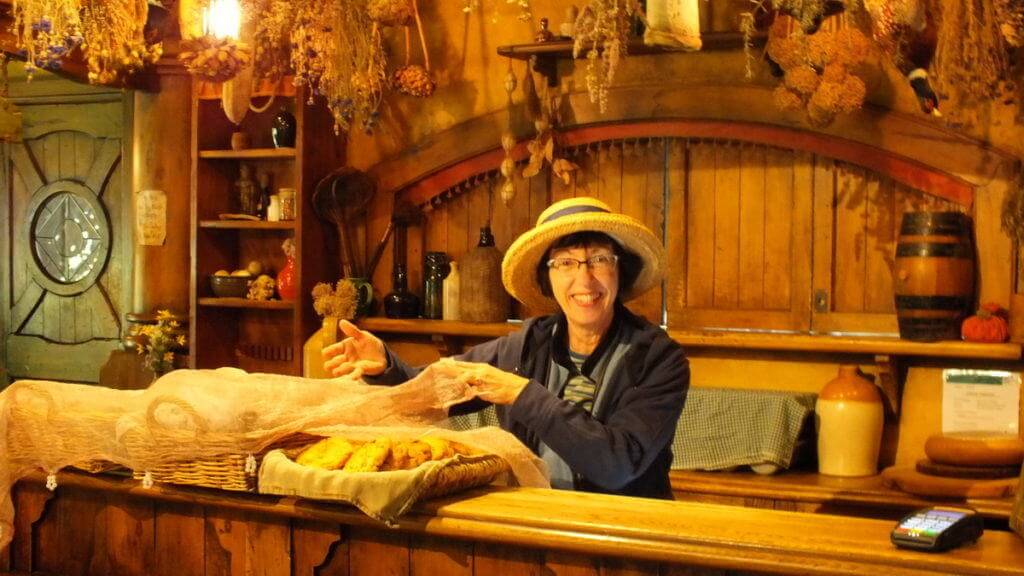
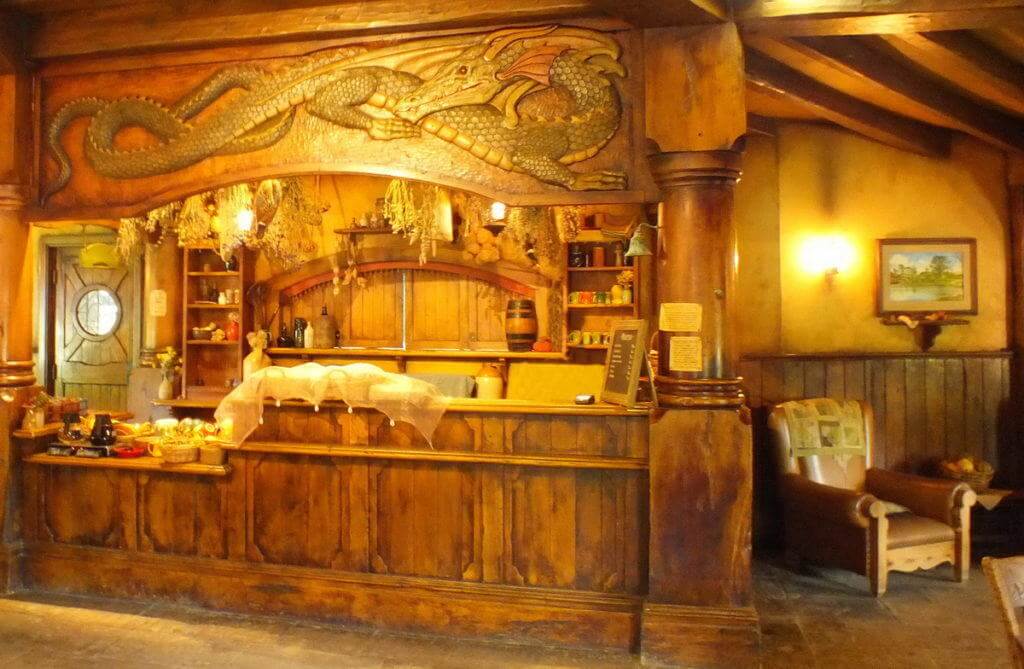
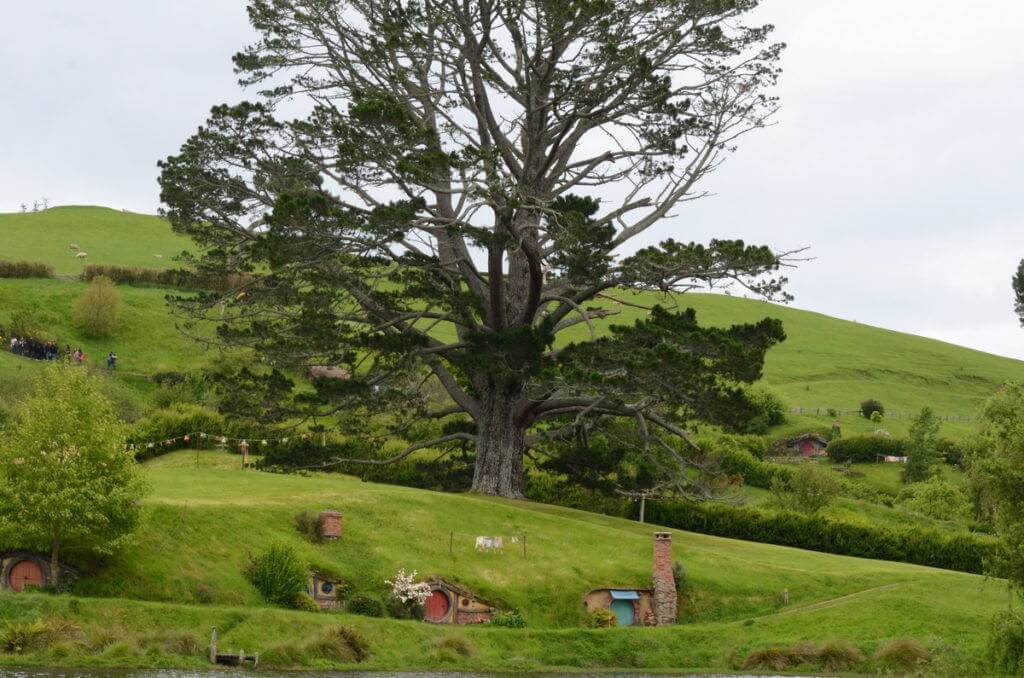
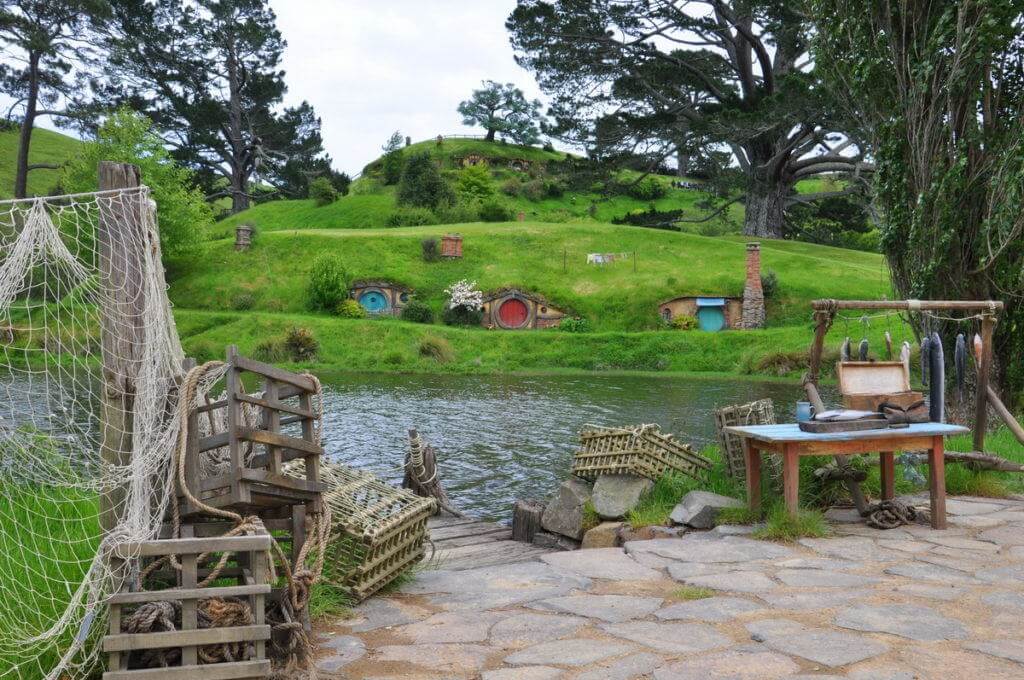
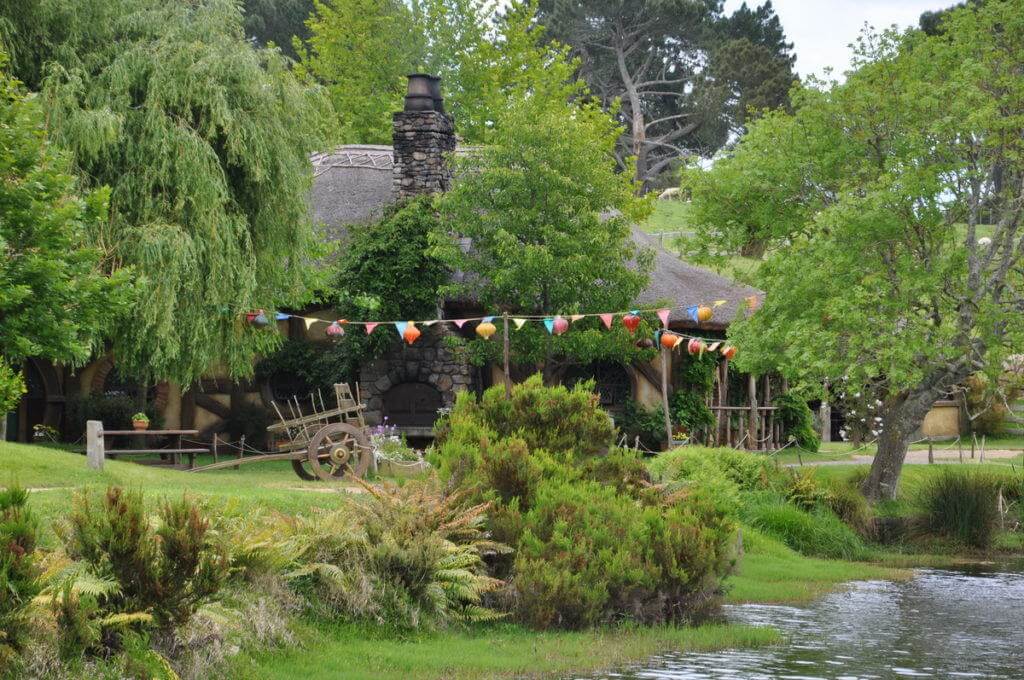
Wonderful photo tour, thanks! Hope to see it myself in person one day…
Thanks so much, Max. We were absolutely delighted with the whole village. Hope you do get to see it, too.
Wow, thanks for the virtual tour. What a treat during COVID-19 to view your delightful pictures and read your vivid descriptions. The Green Dragon looks very inviting, too.
I hope Hobbiton and the Shire survive this dreadful time, as I definitely want to visit someday…
Thank you for such a lovely comment Jennifer. We, like you, hope that all of these amazing tourist attractions survive the pandemic. These are dire times for so many businesses. Keep well and safe so that you, too, can visit Hobbiton in the years ahead.